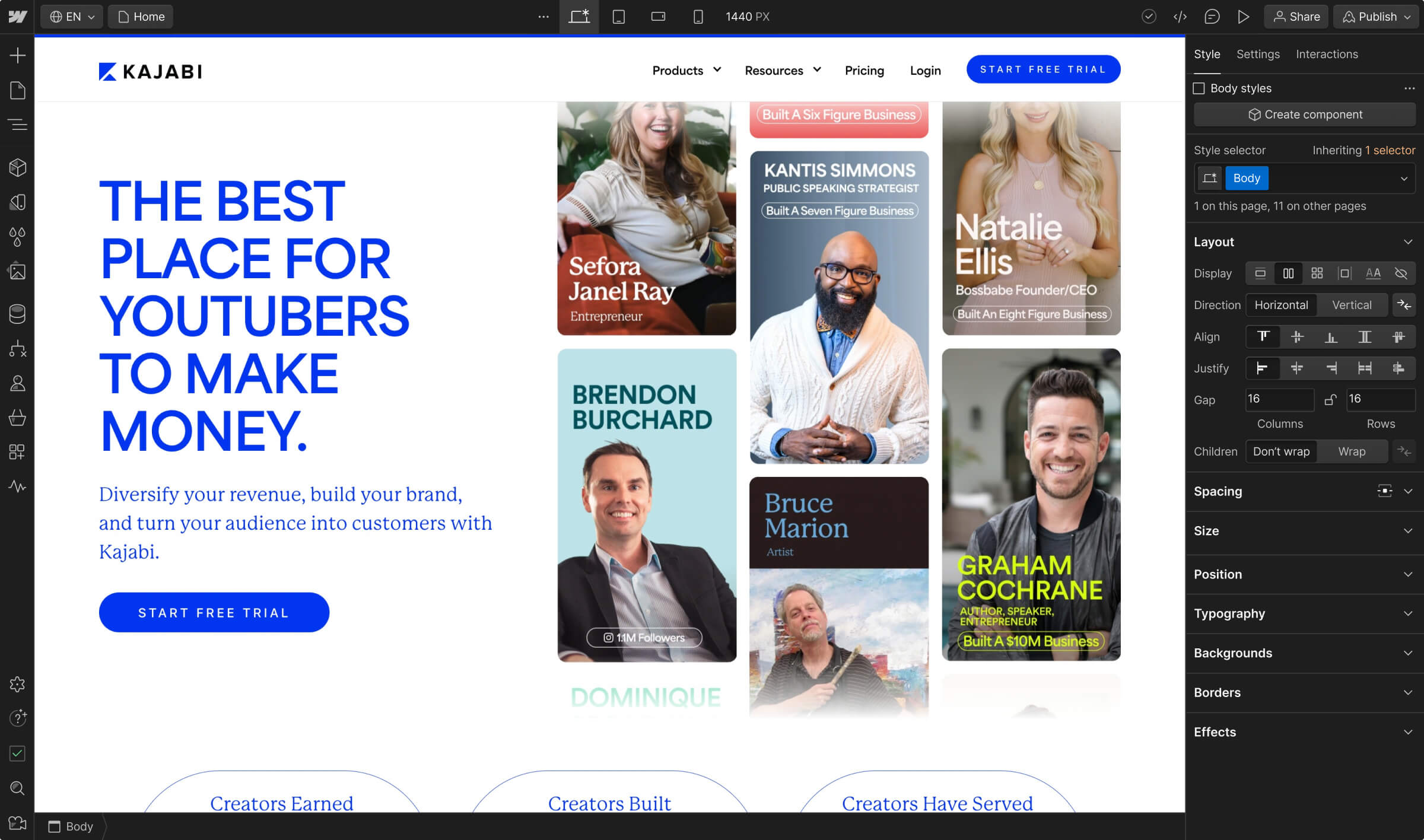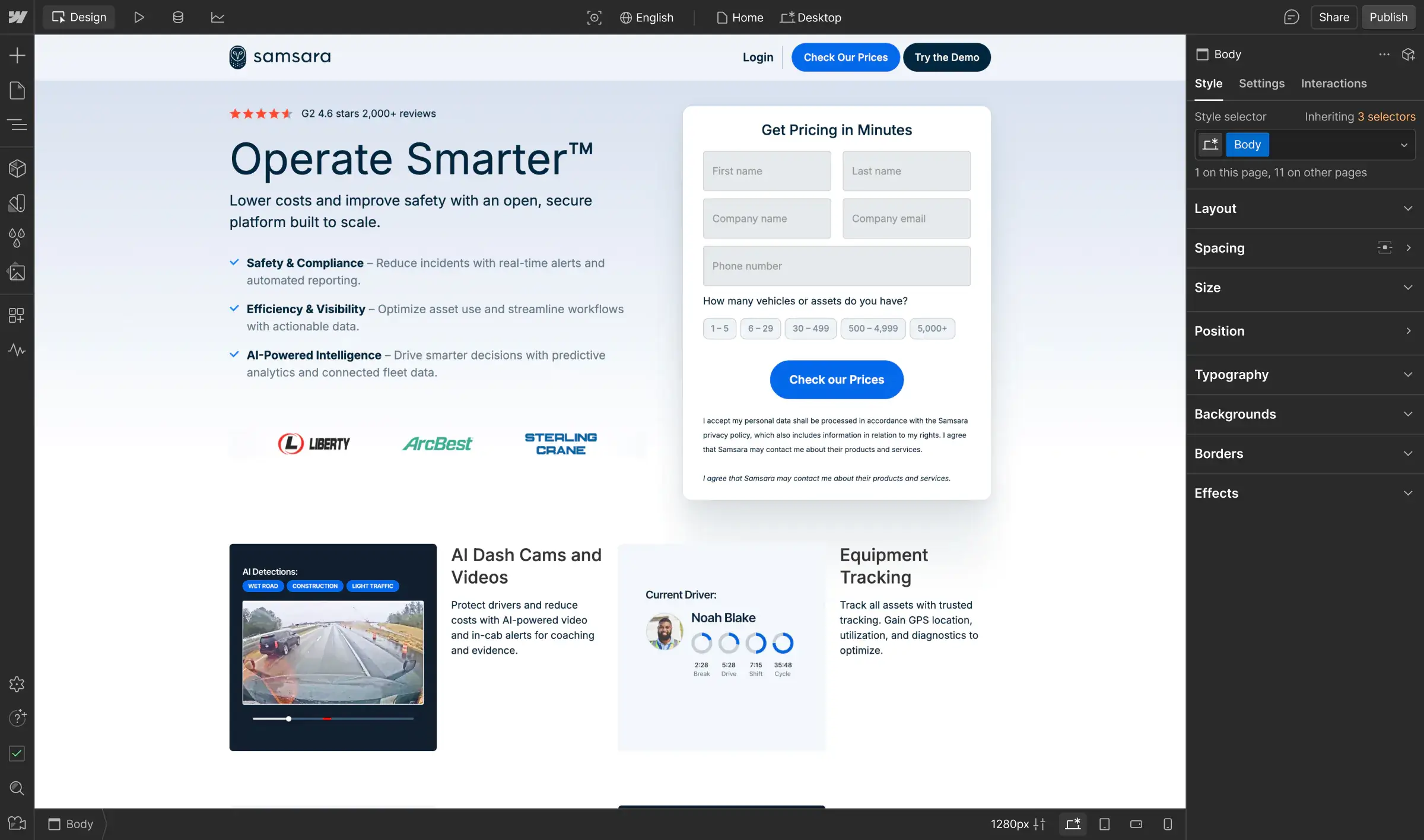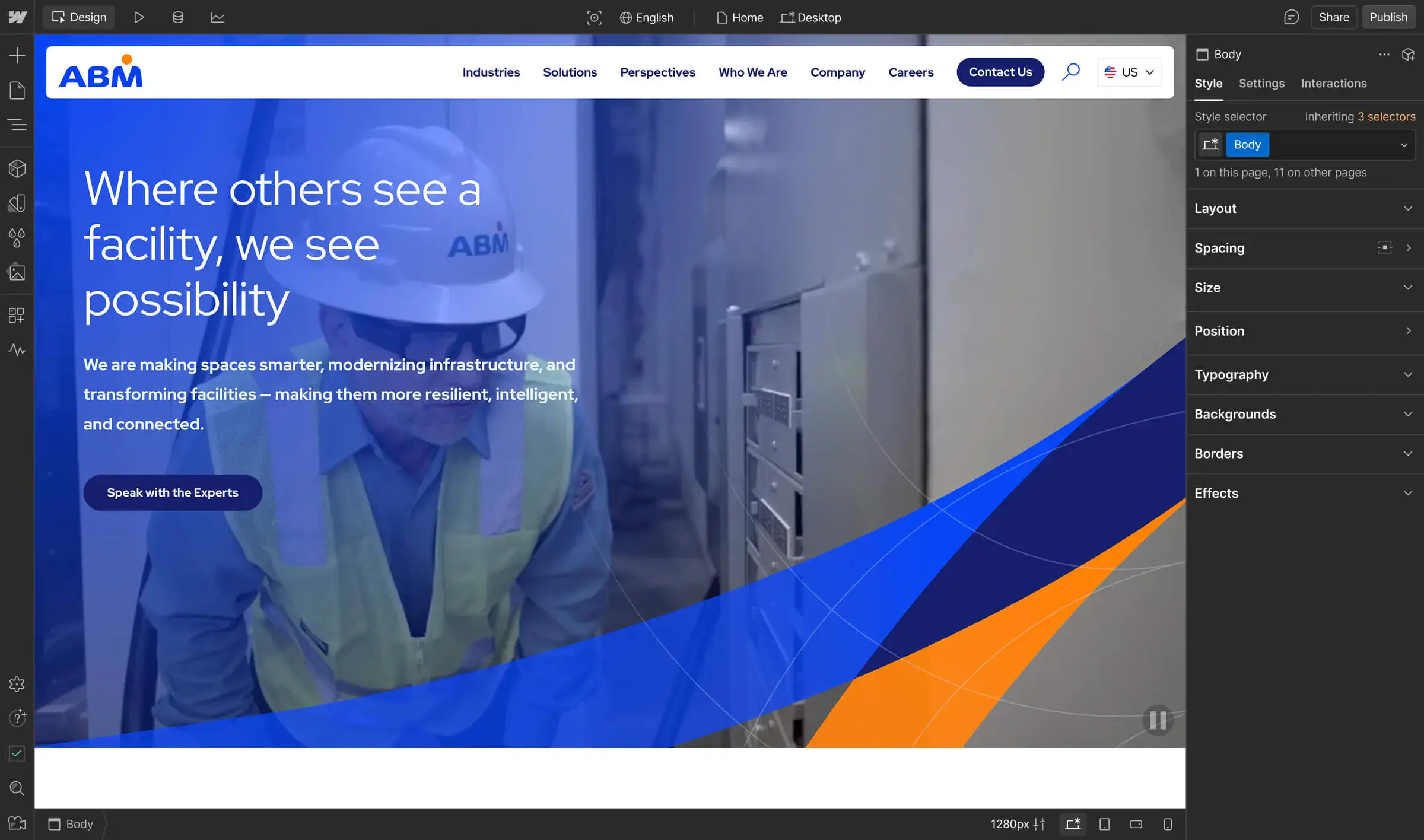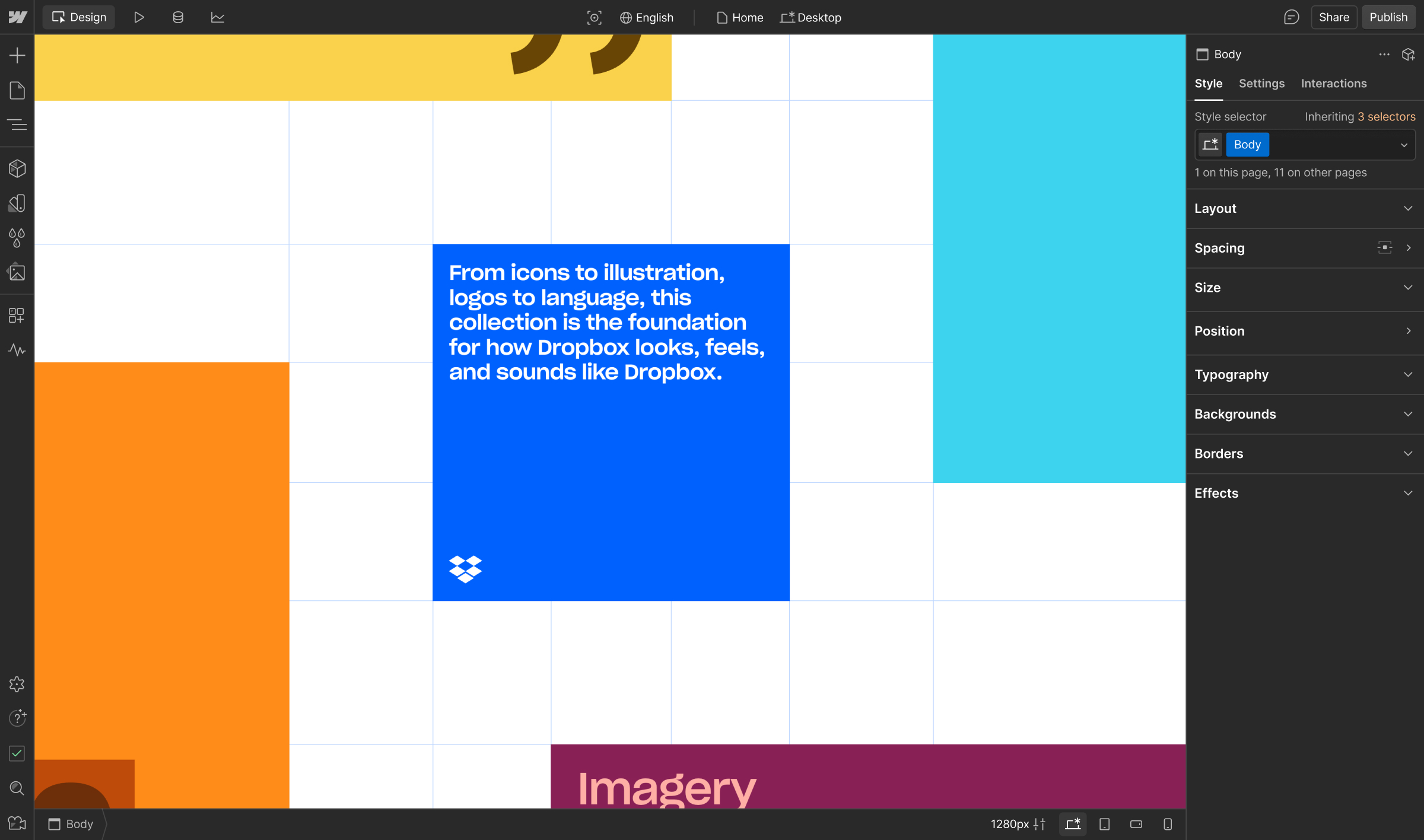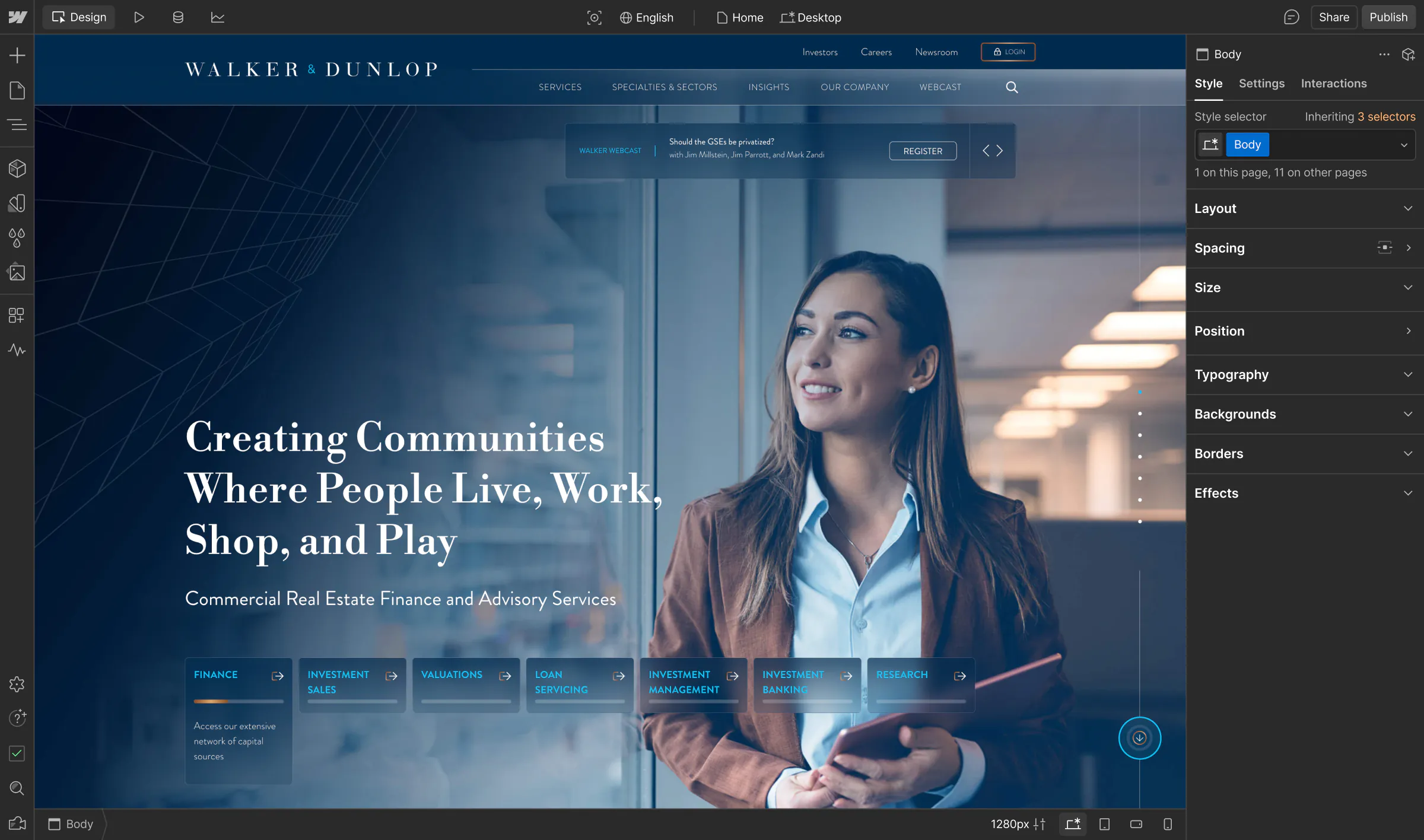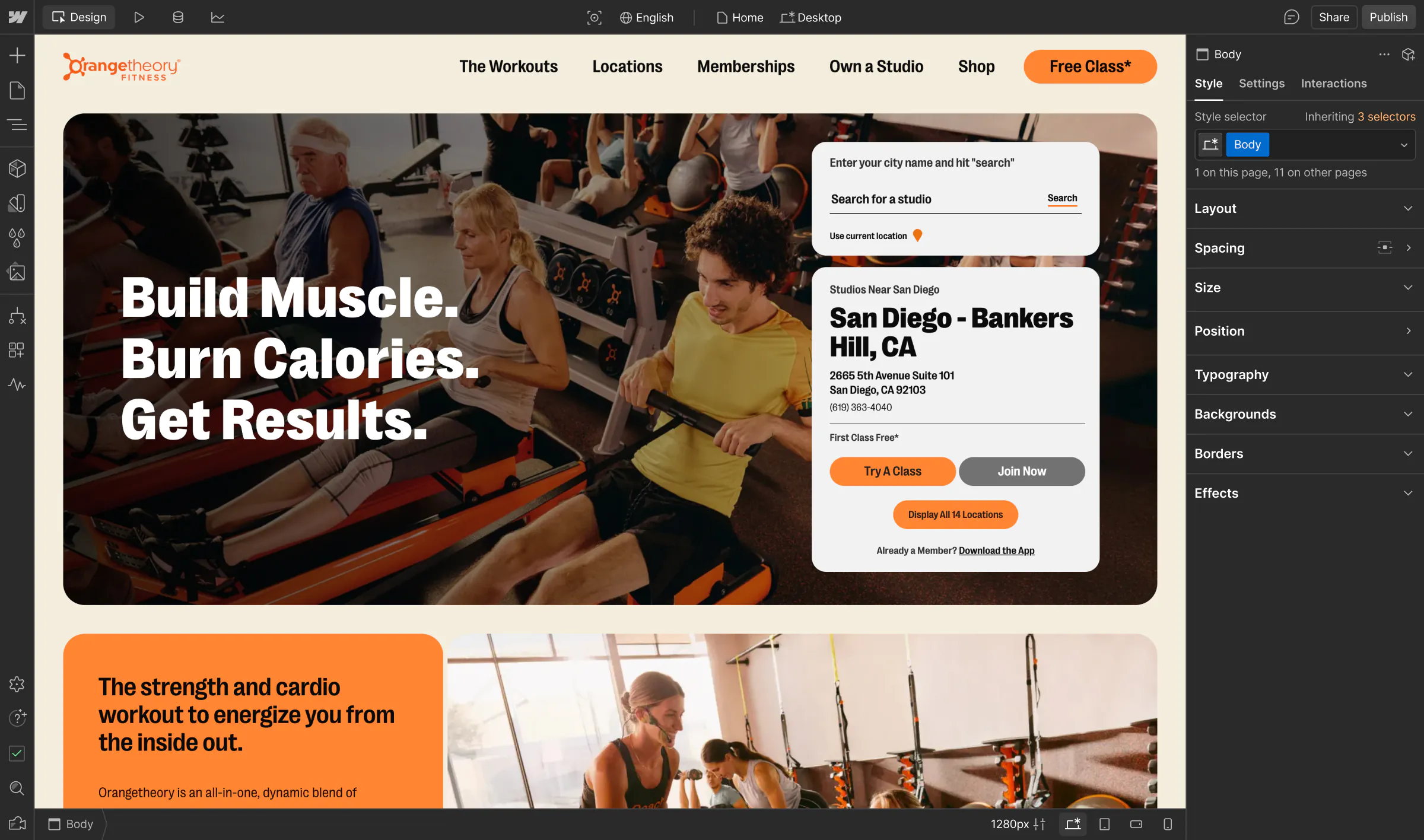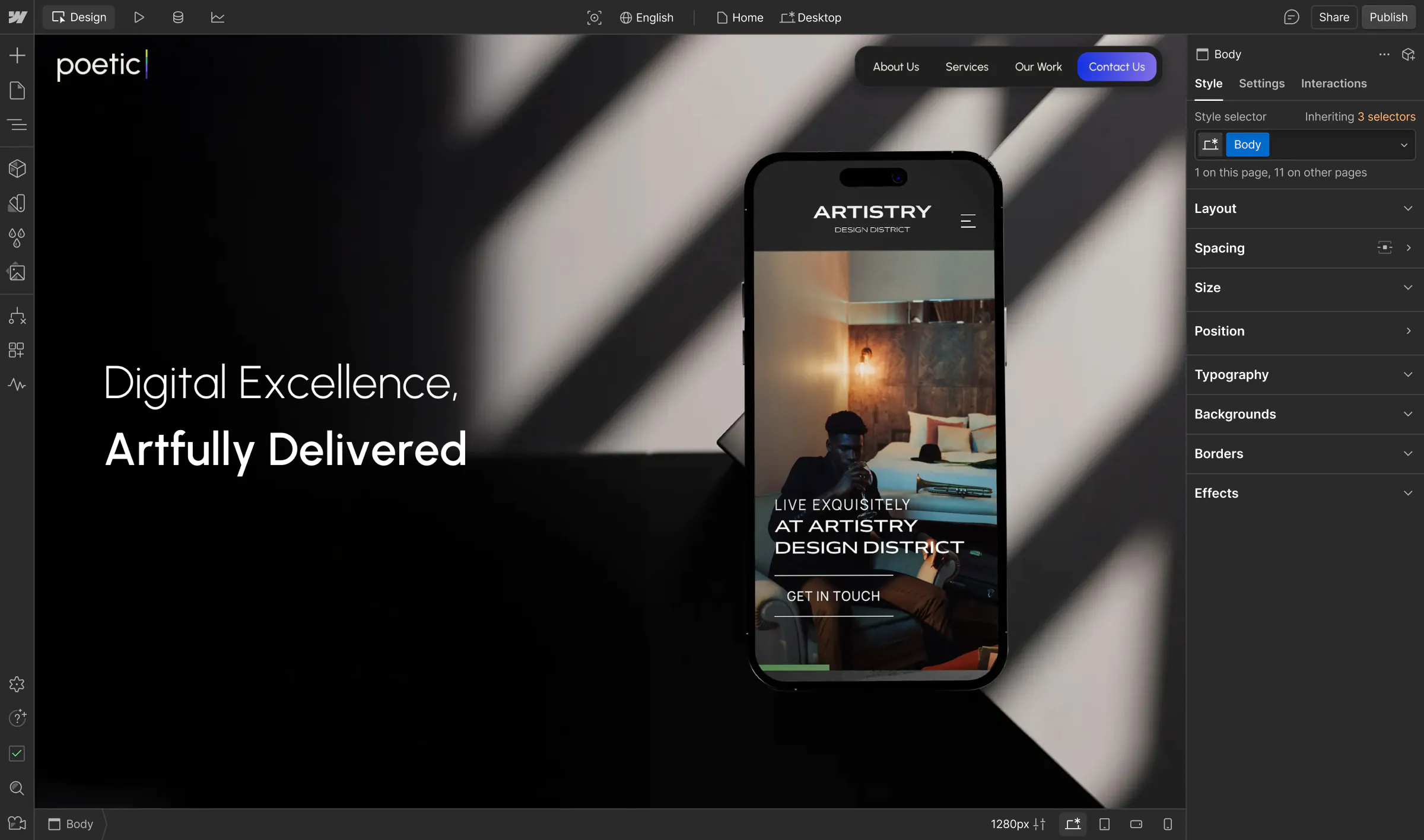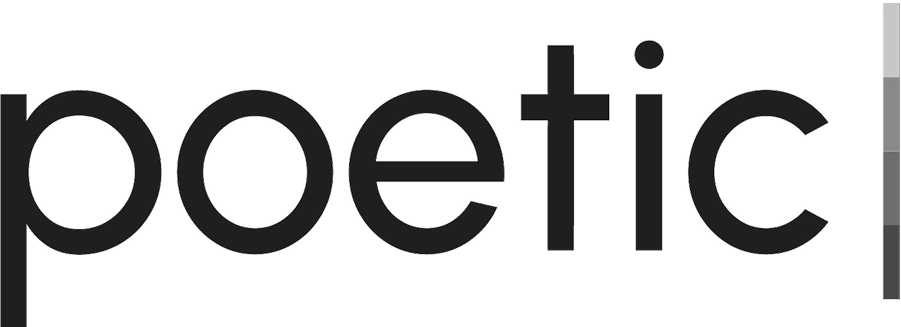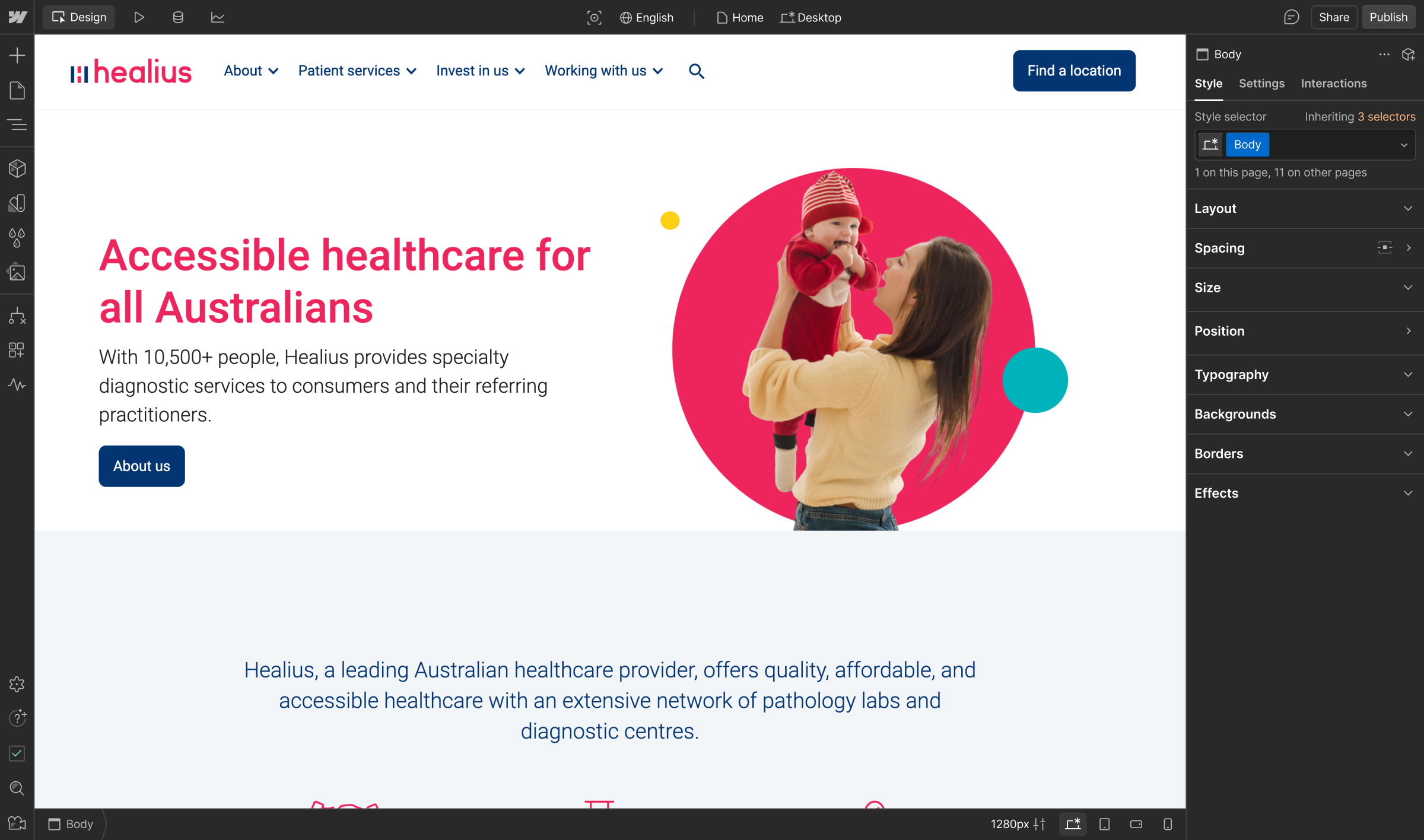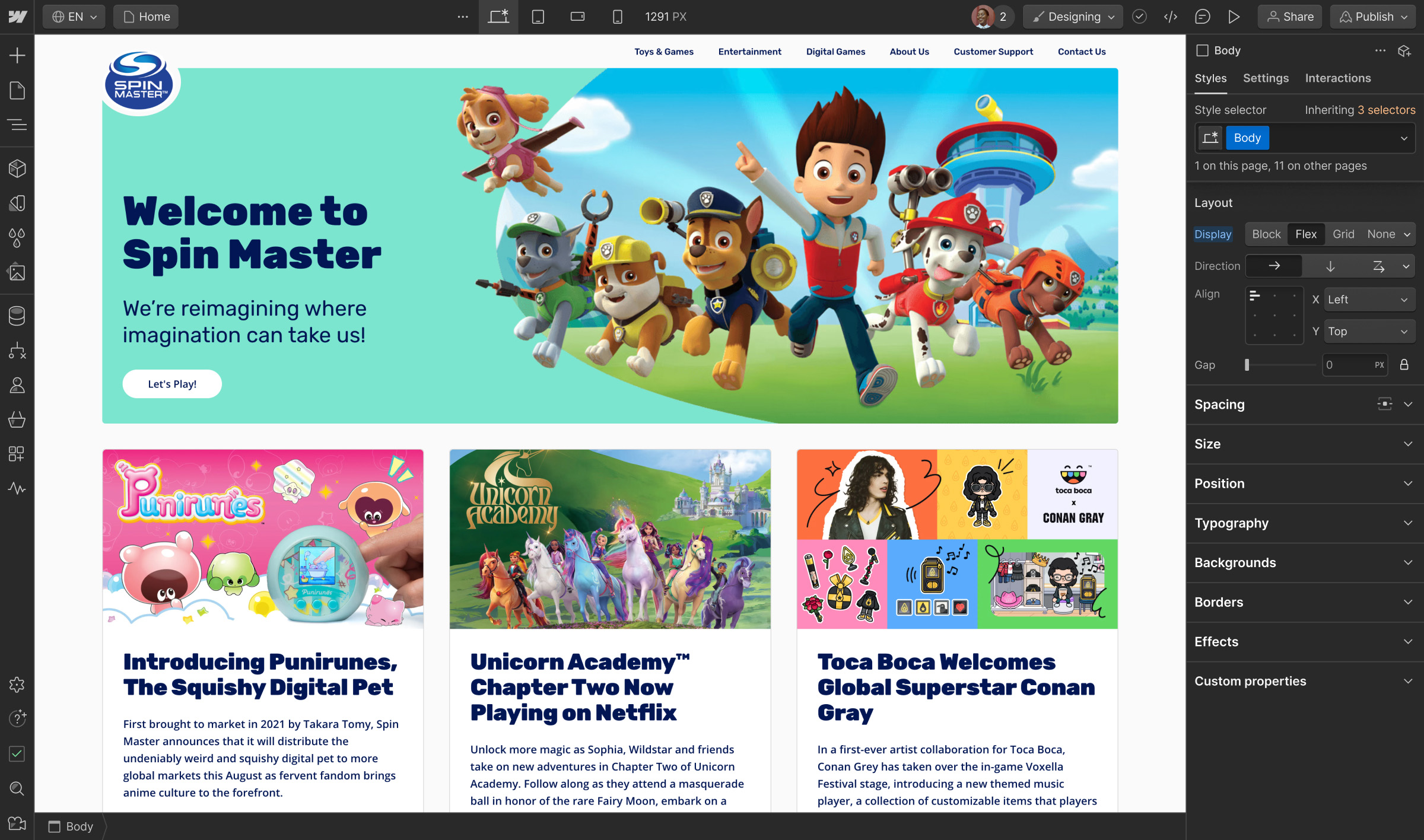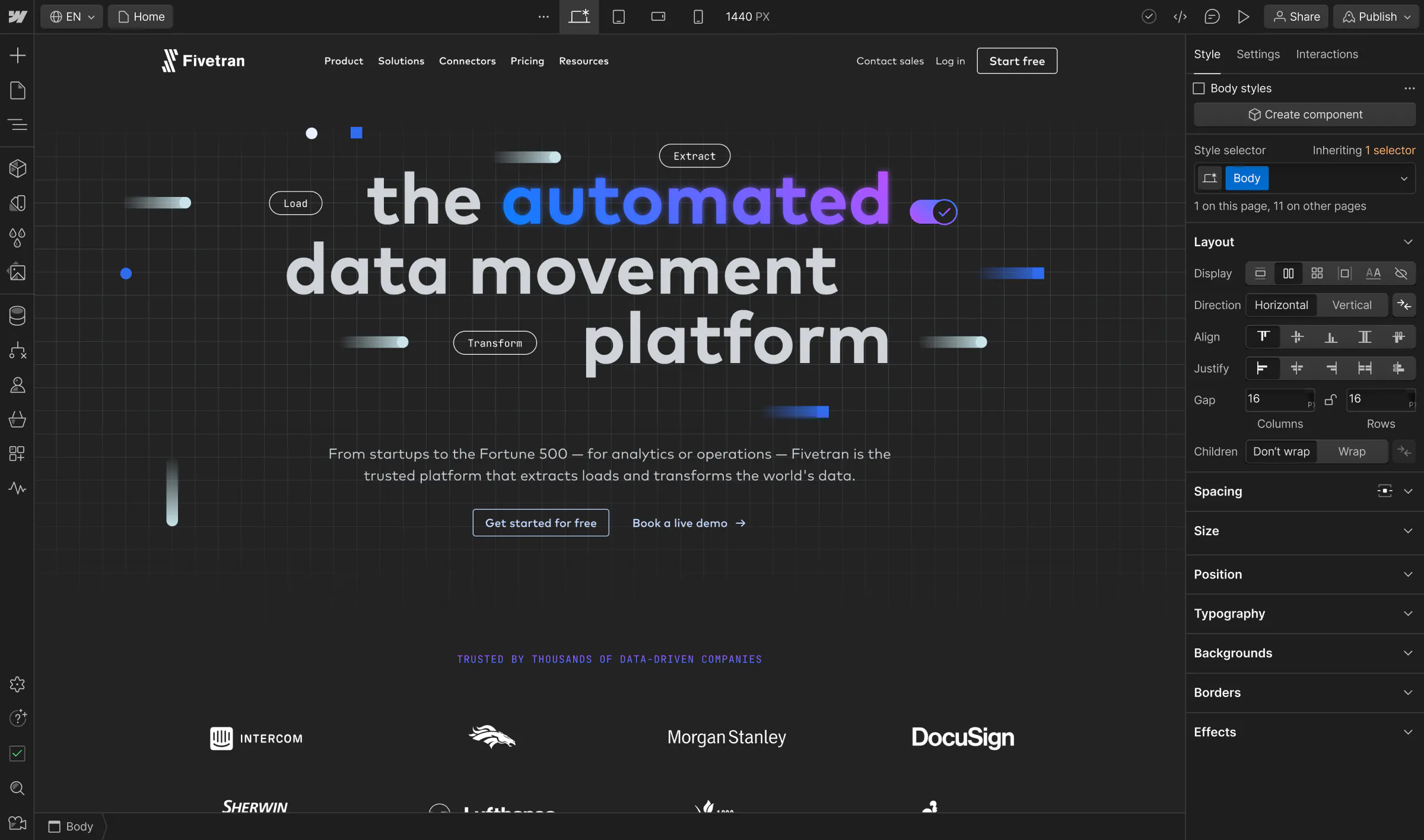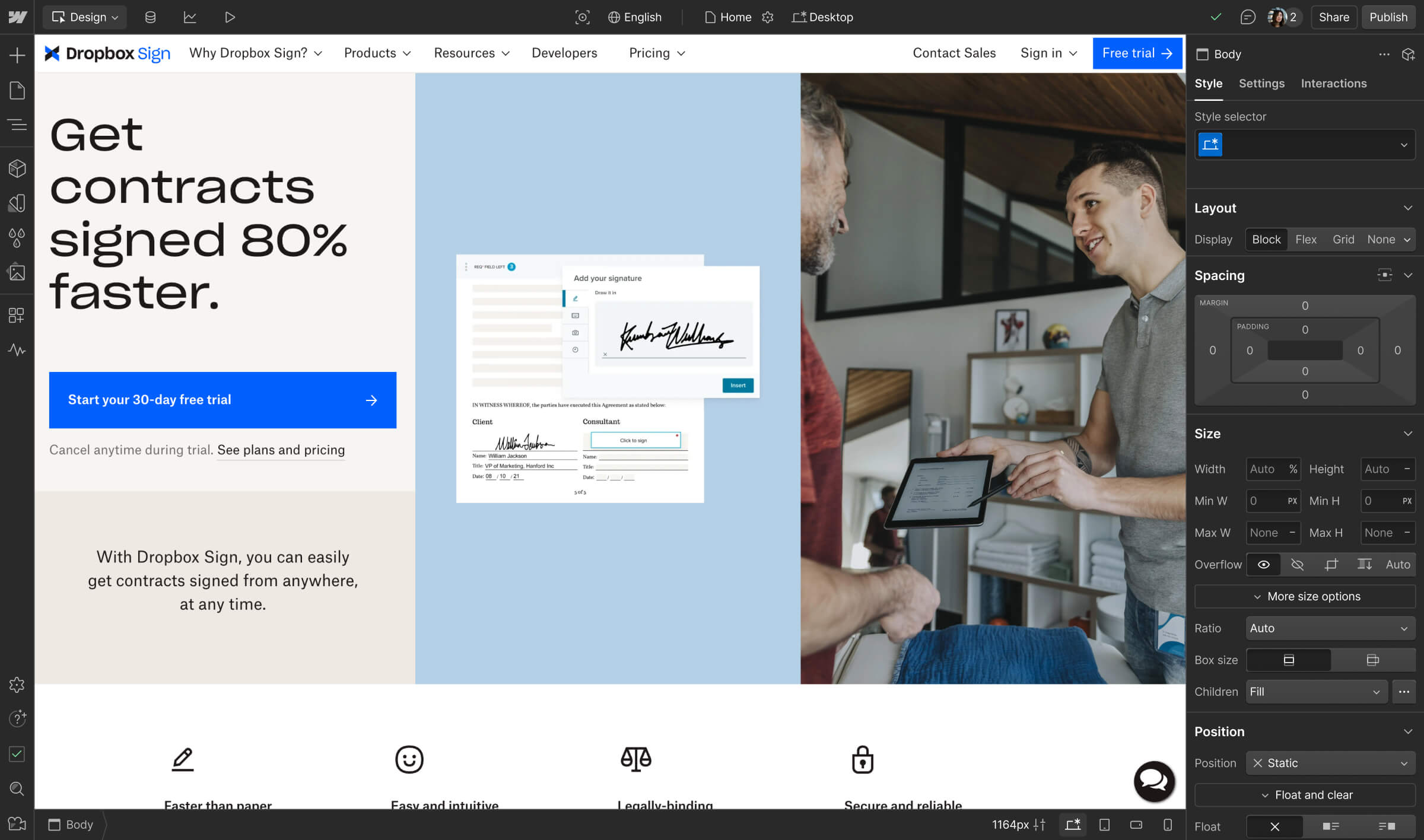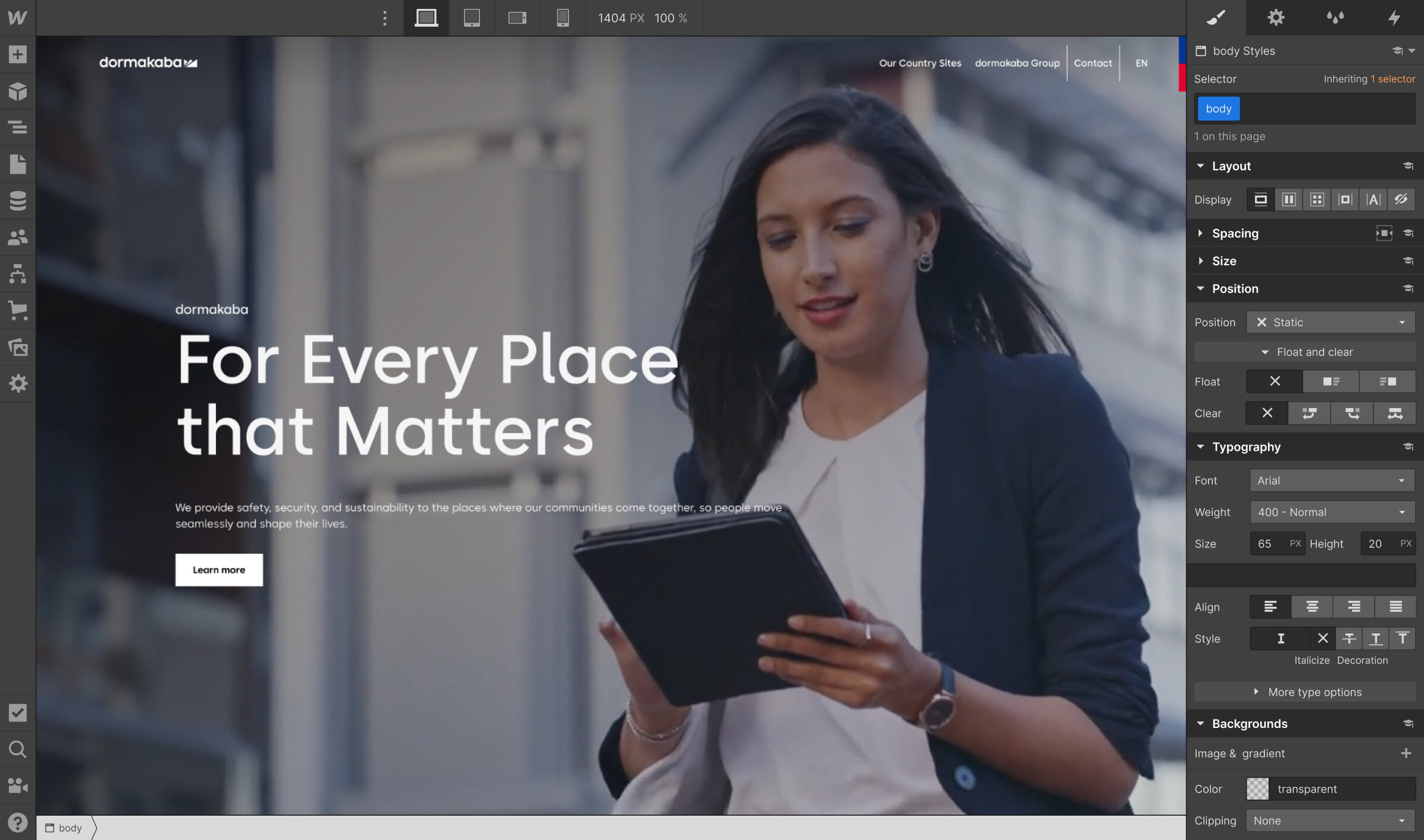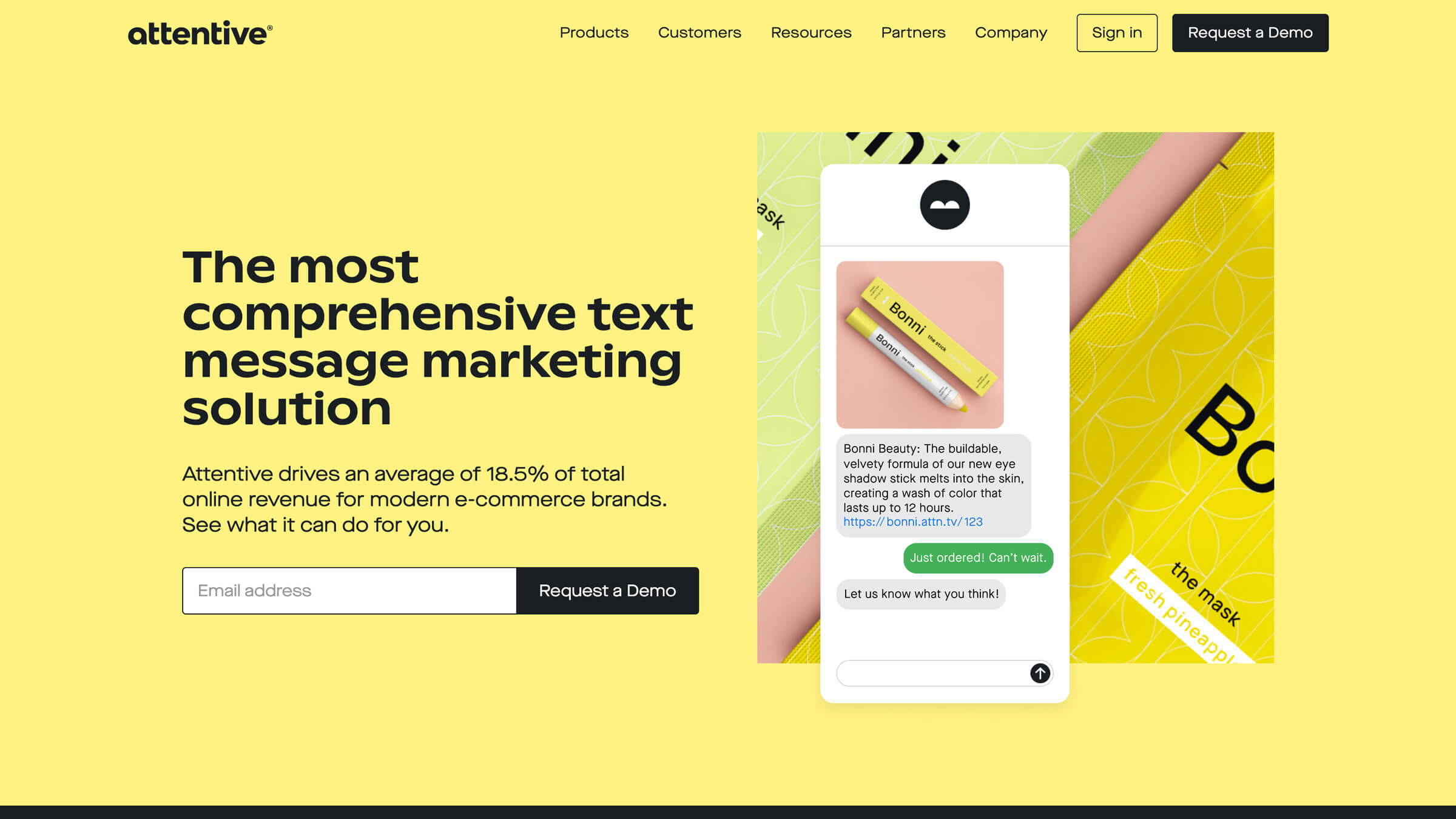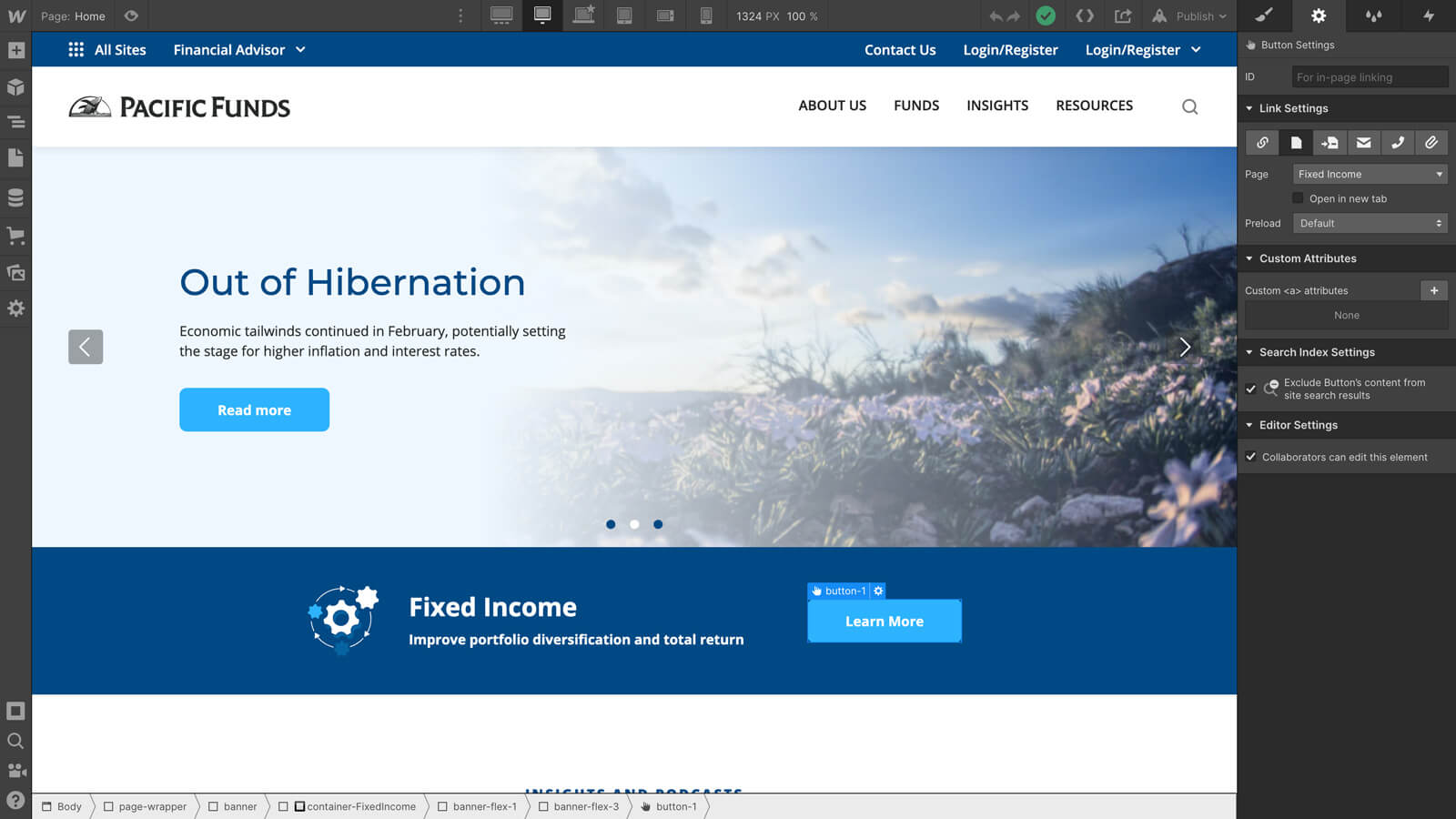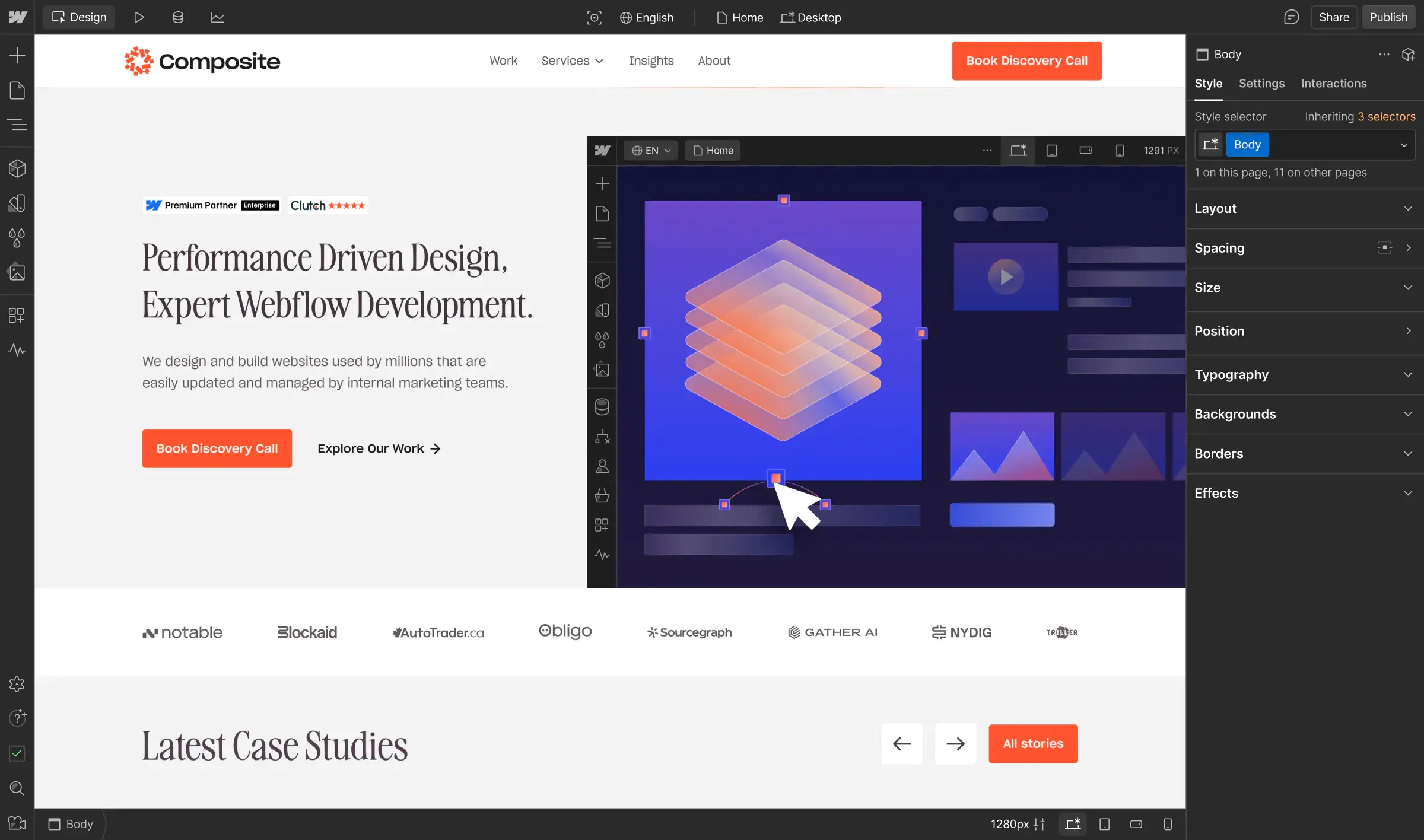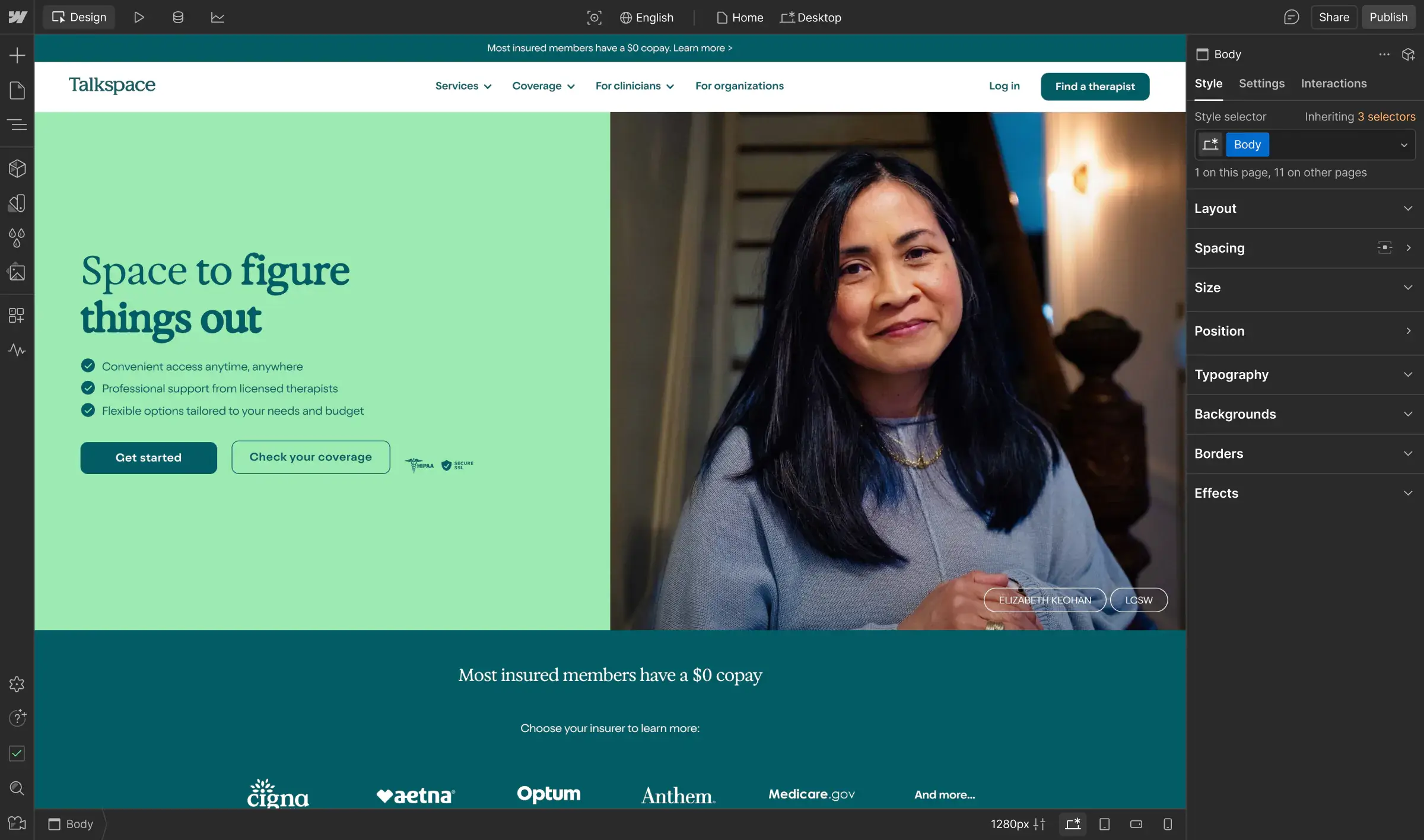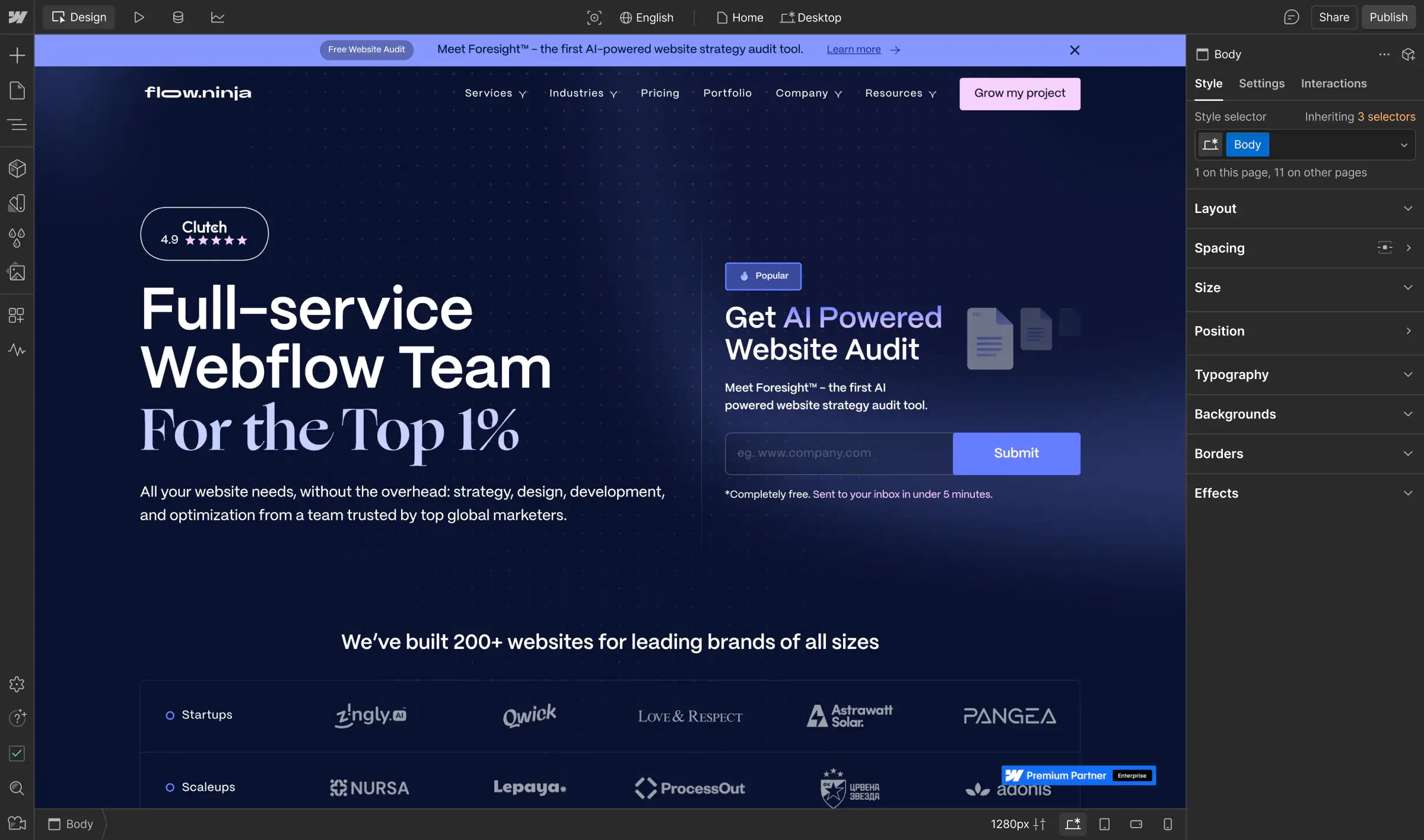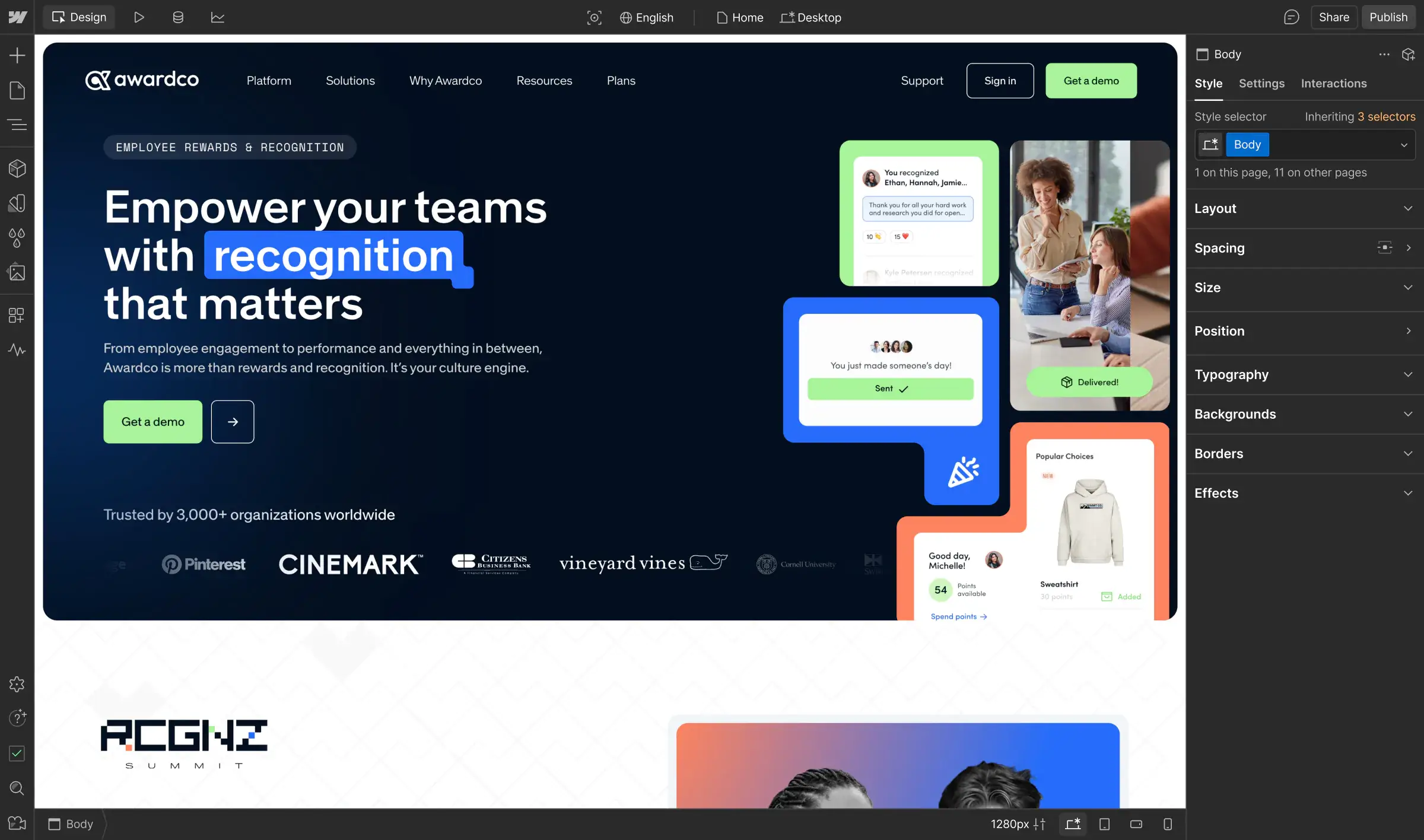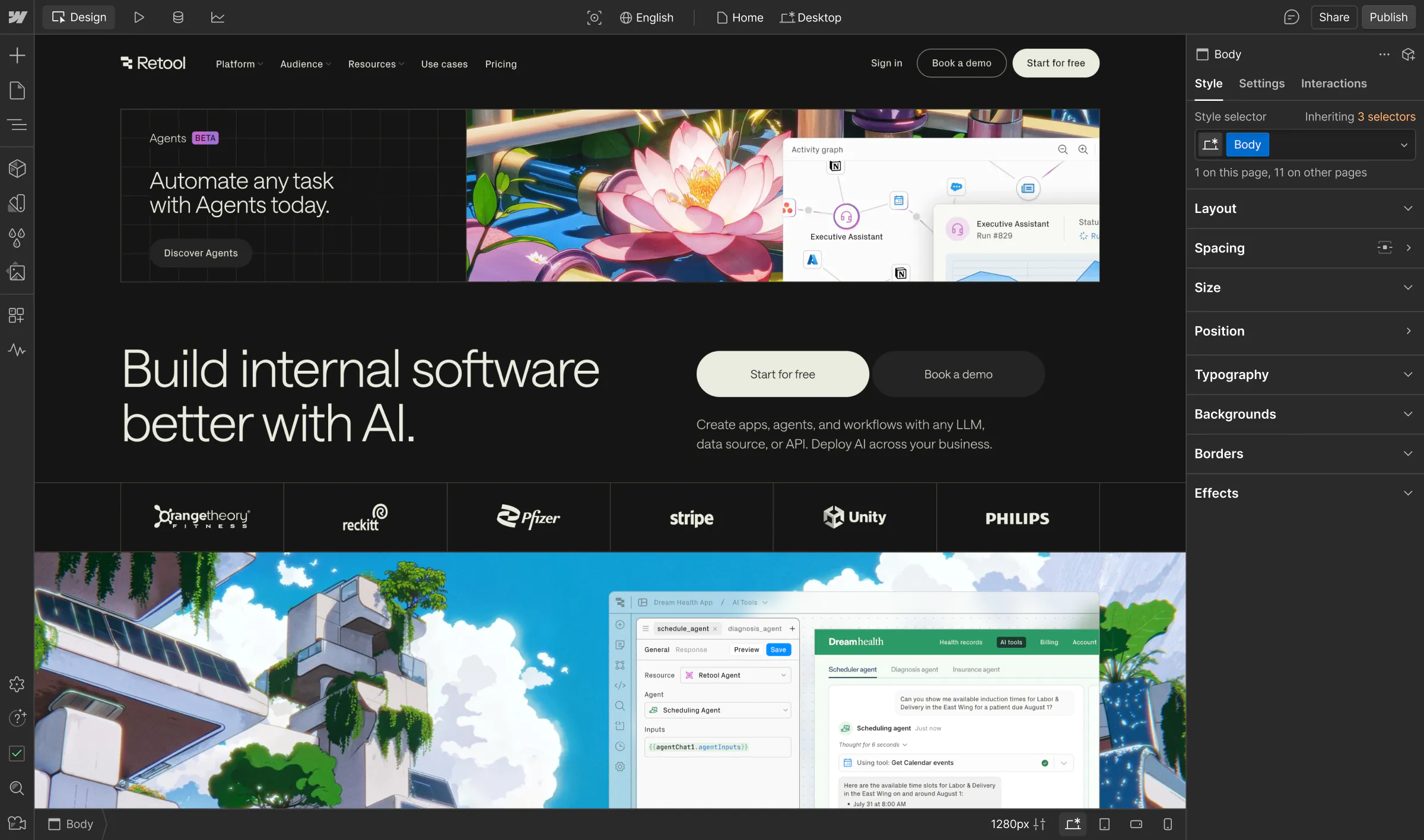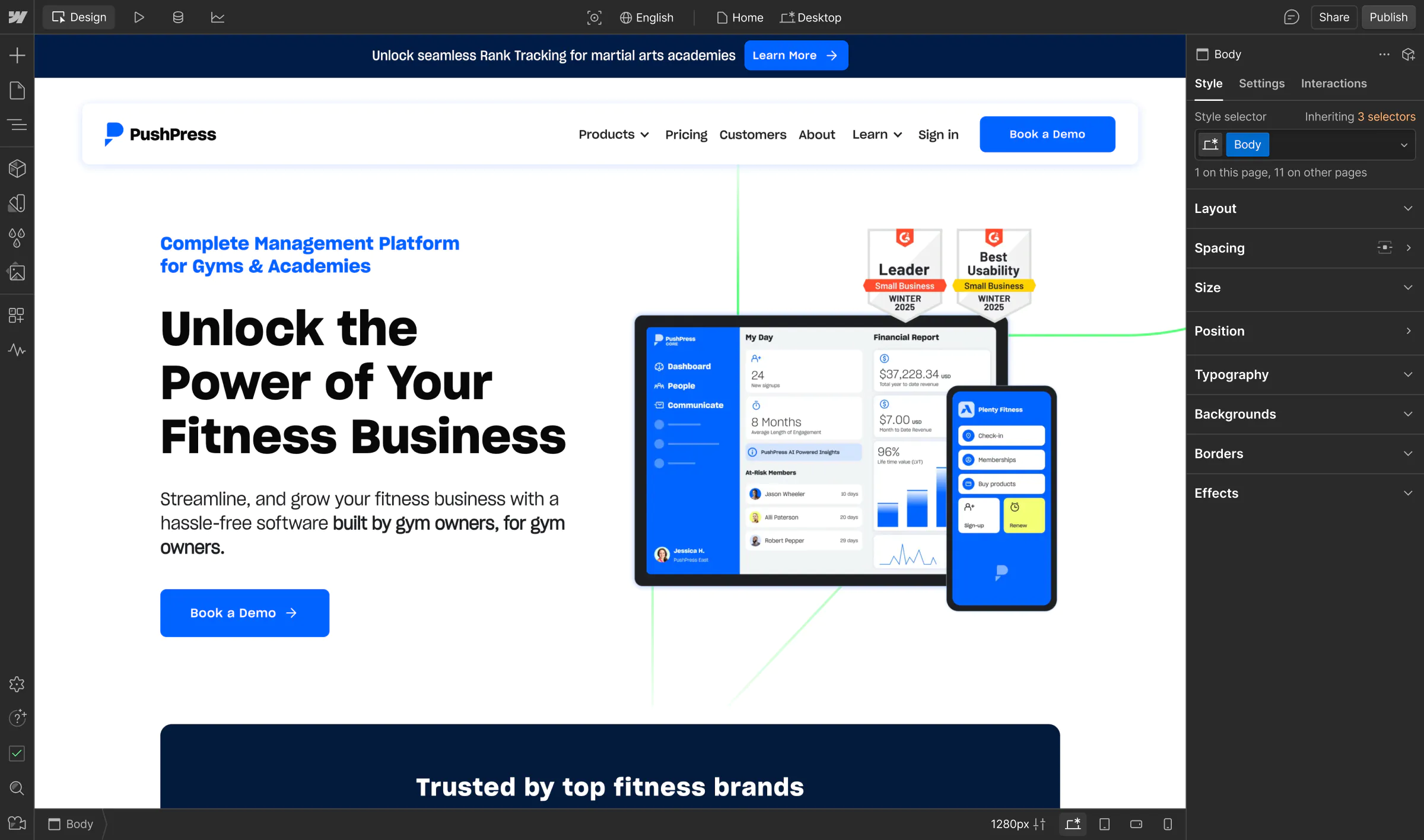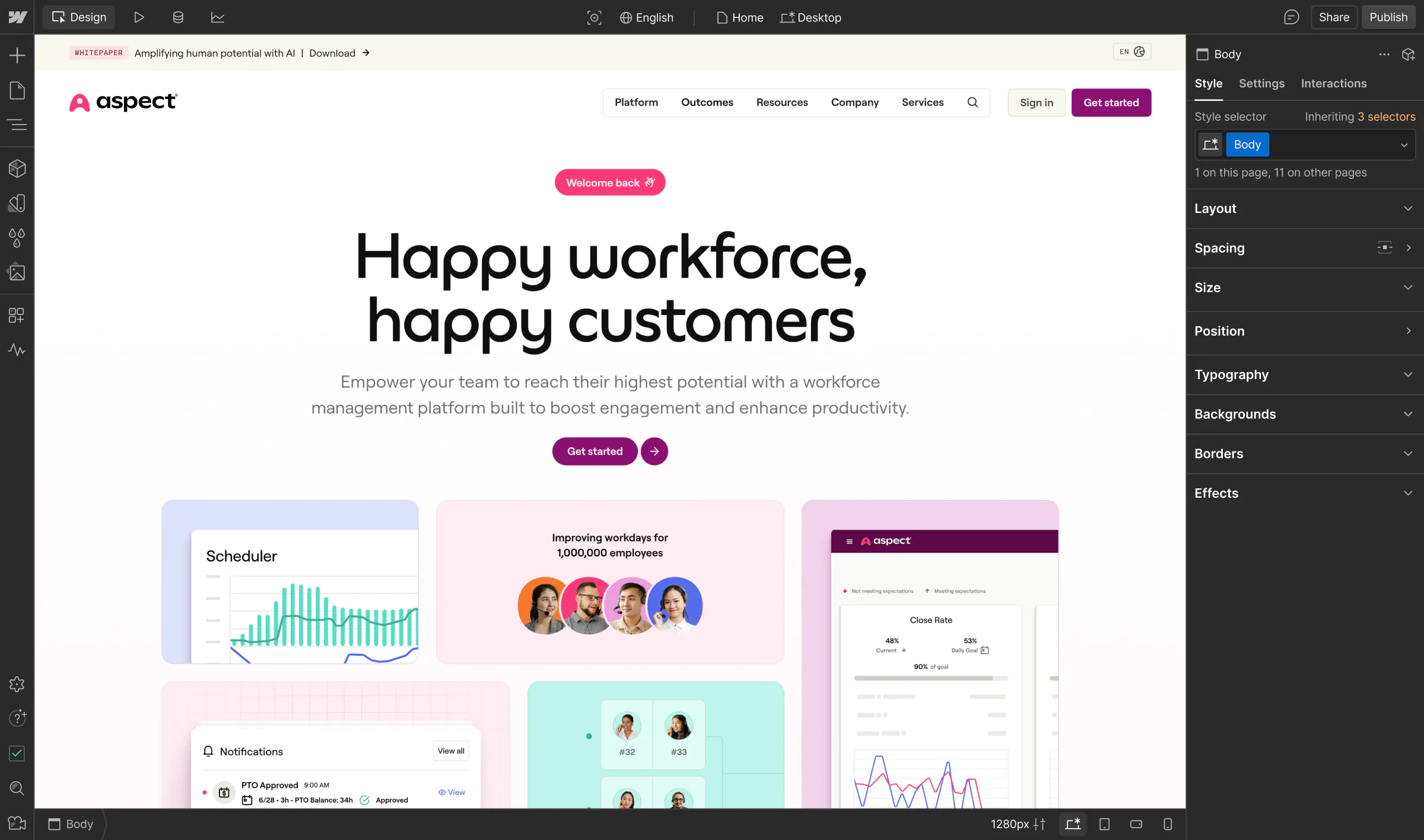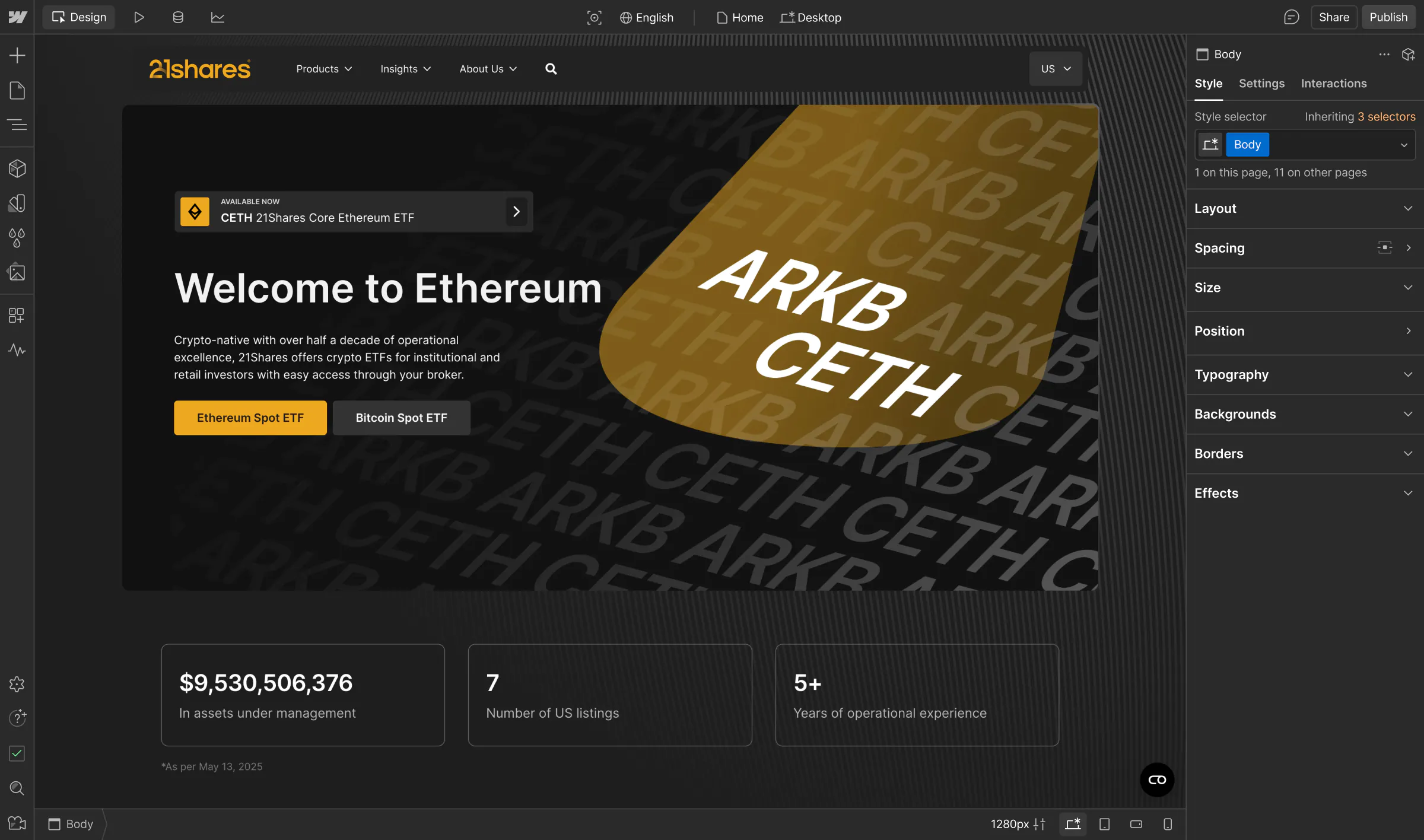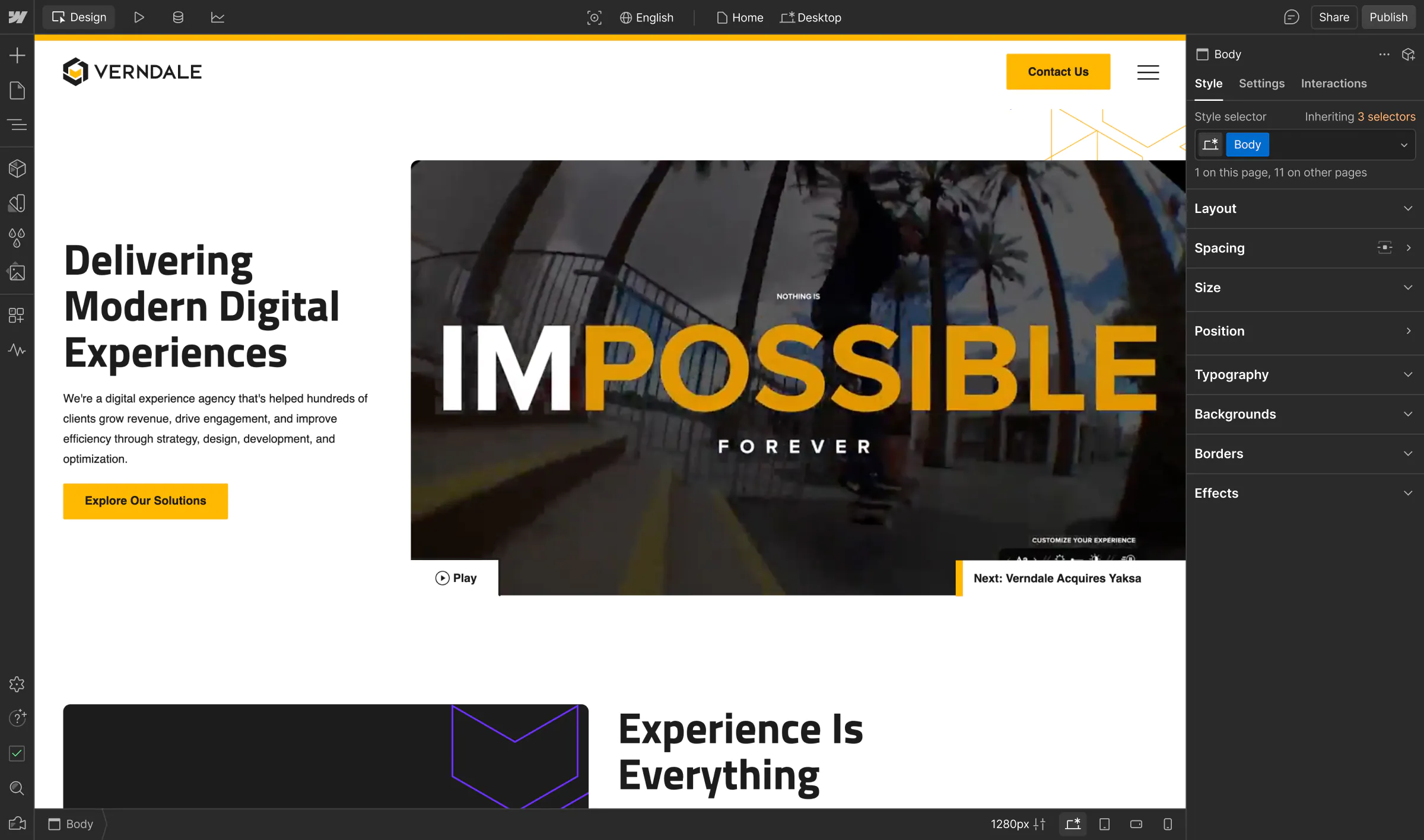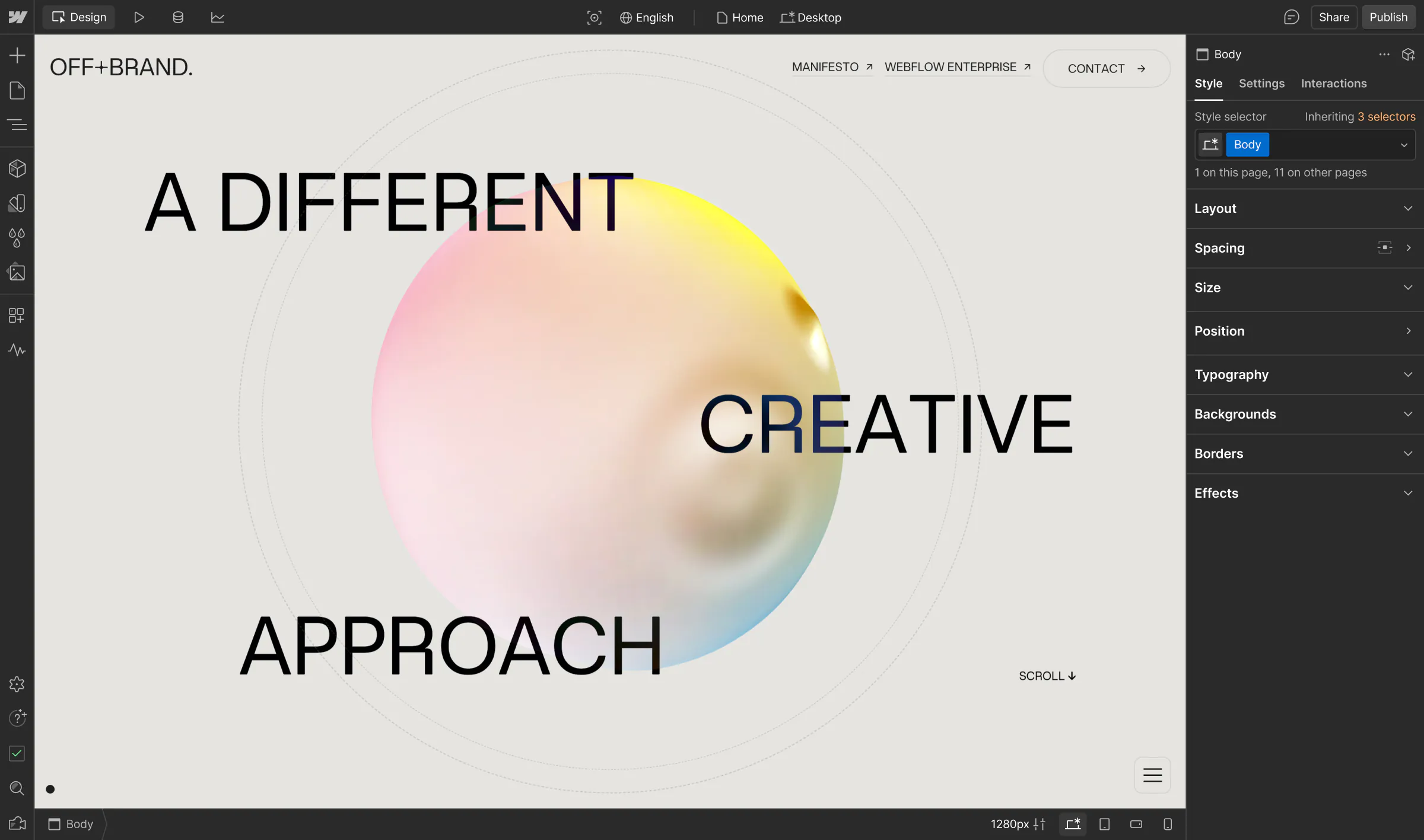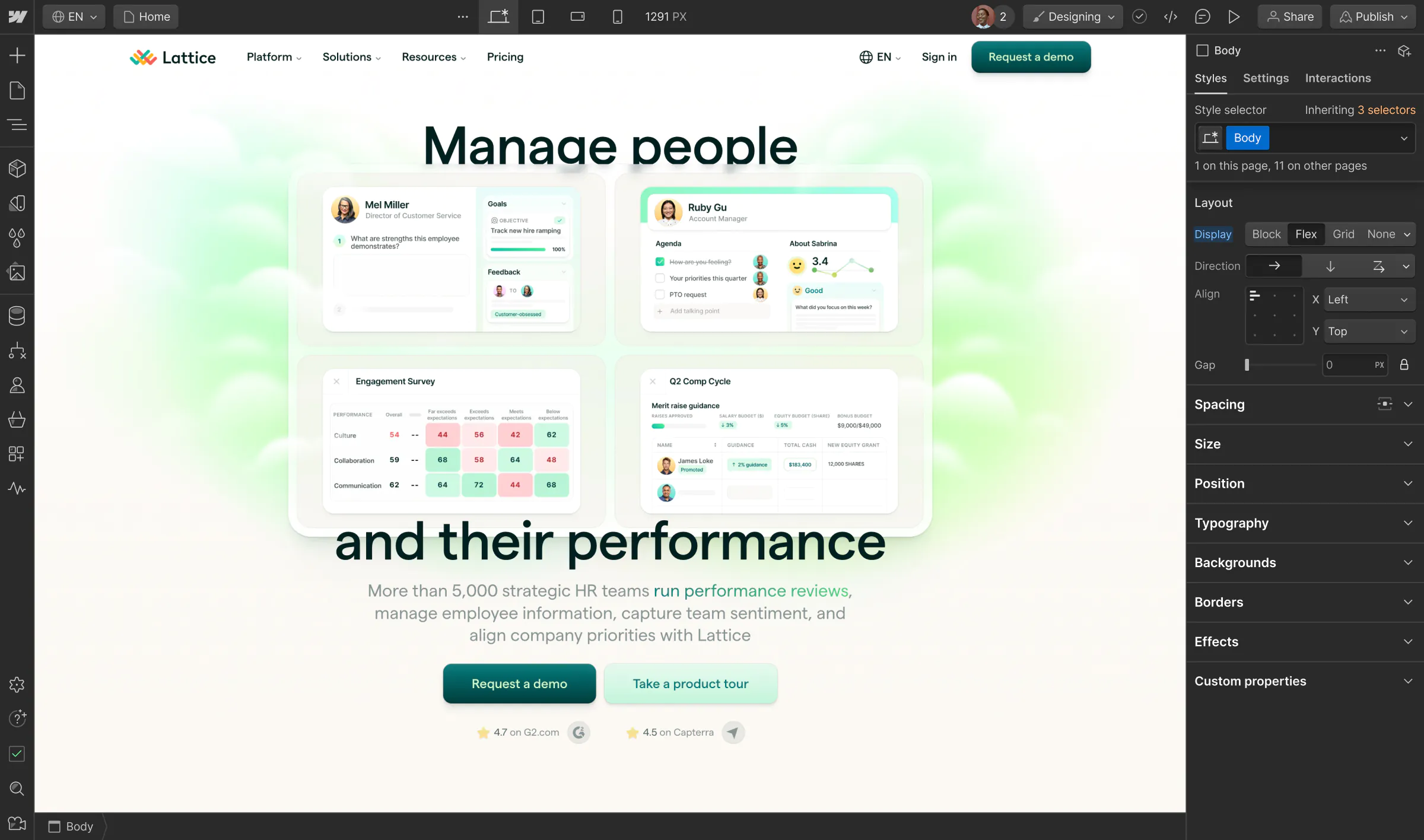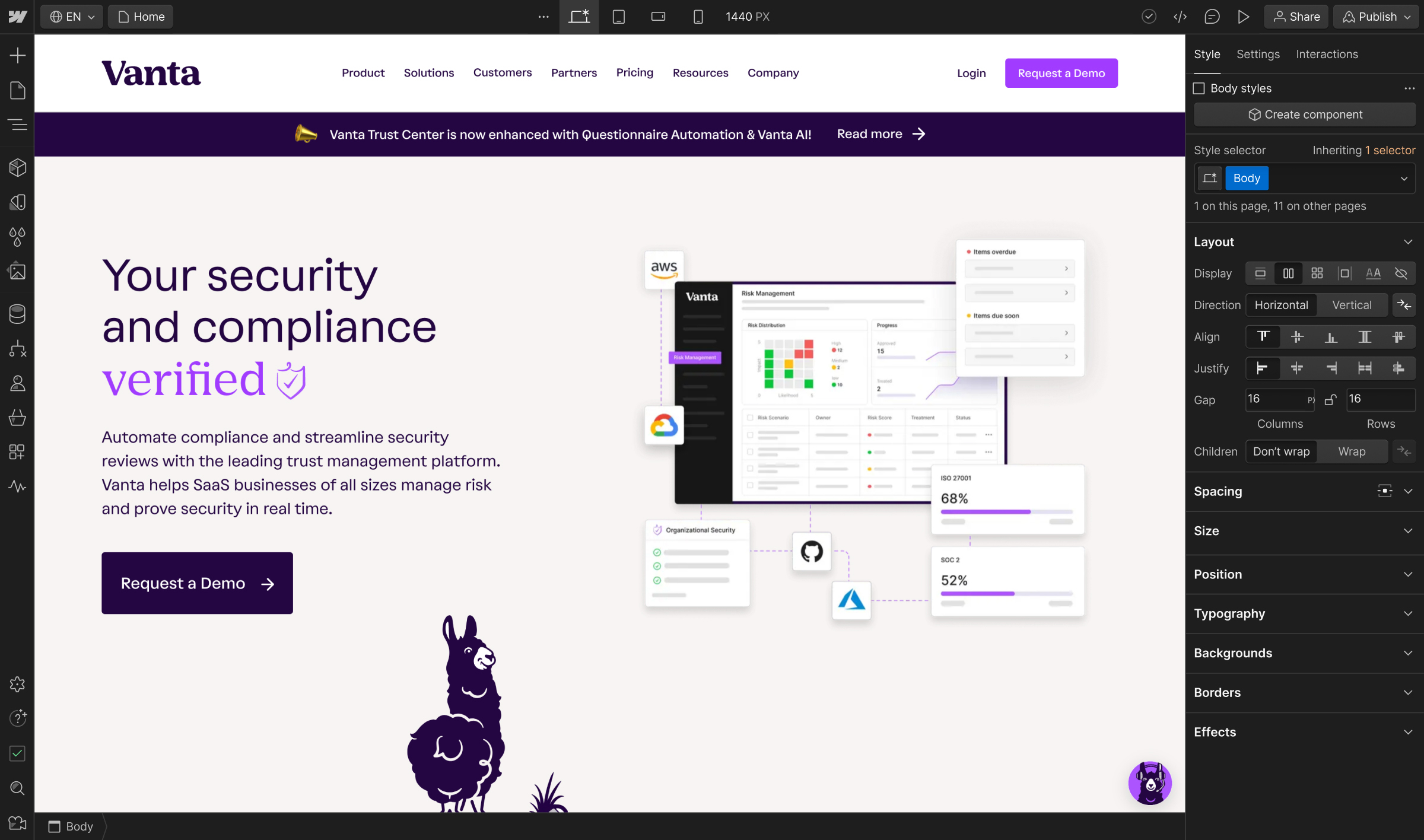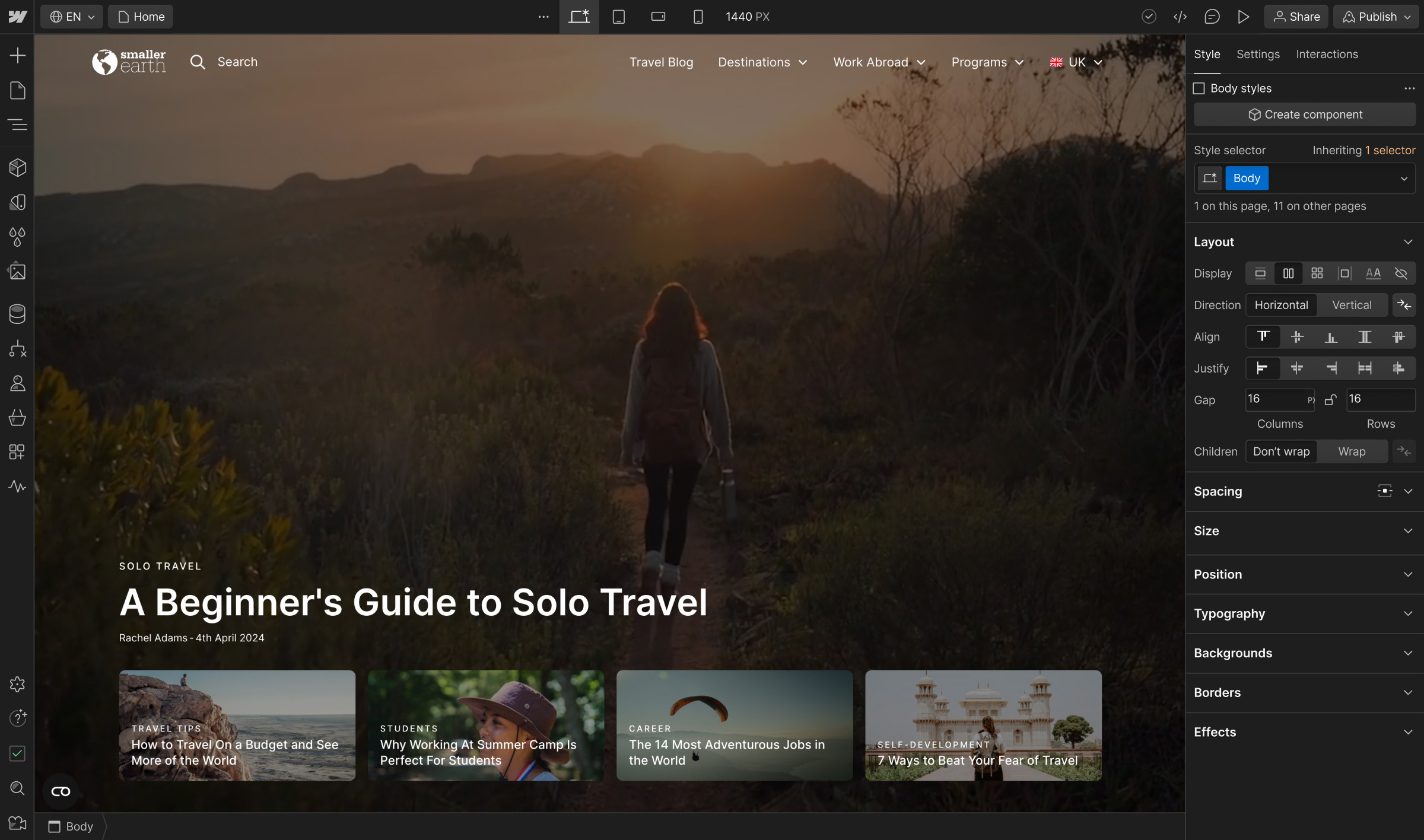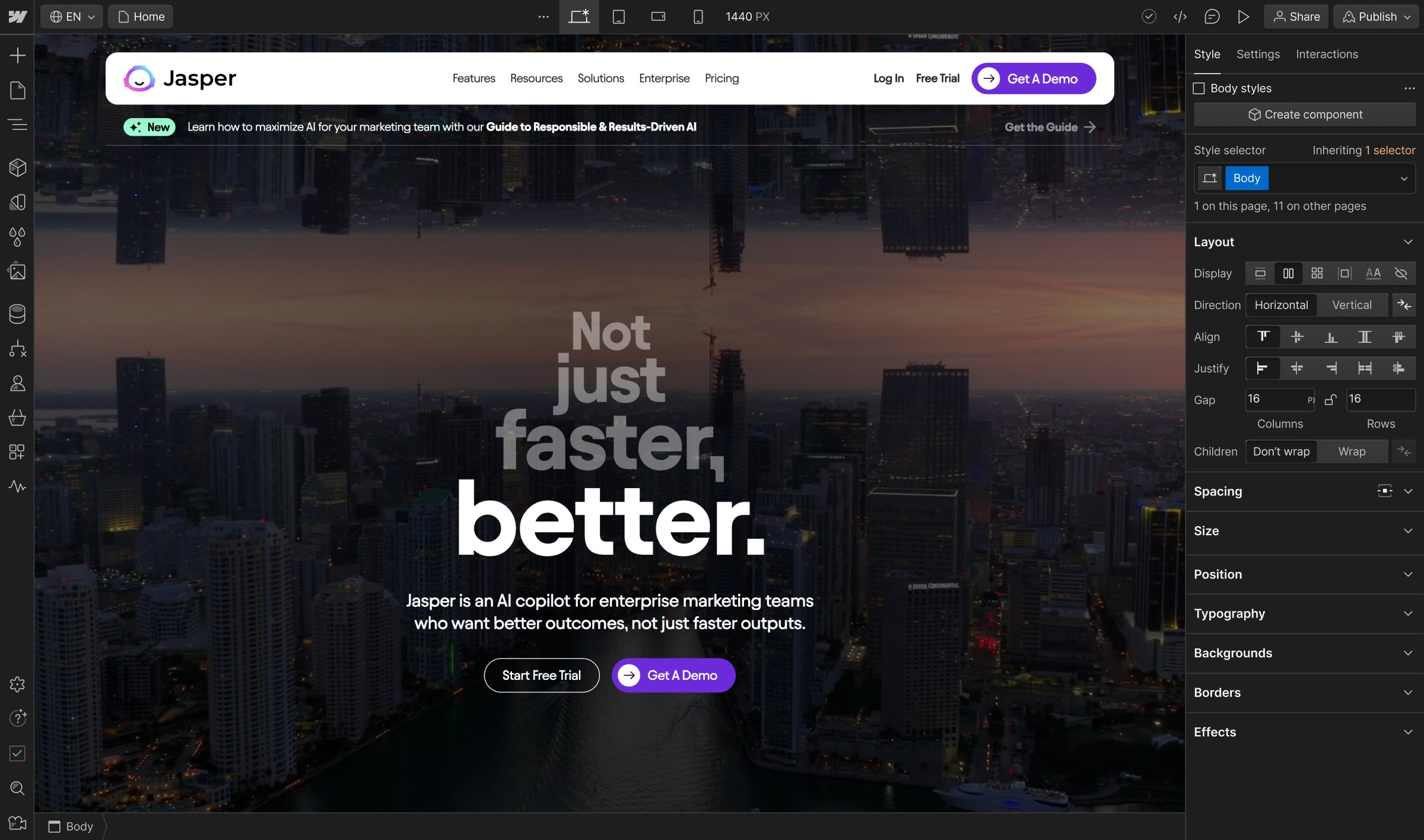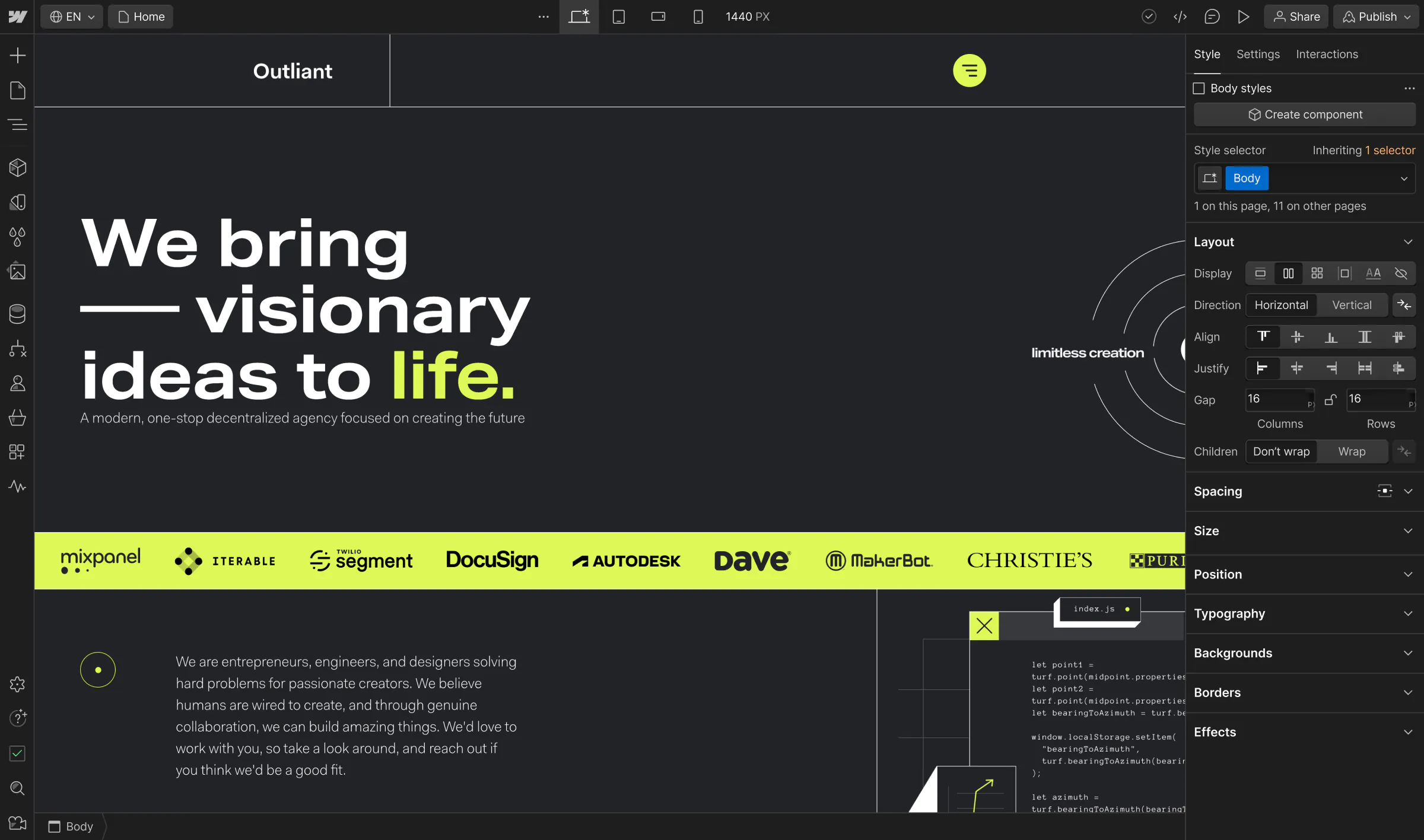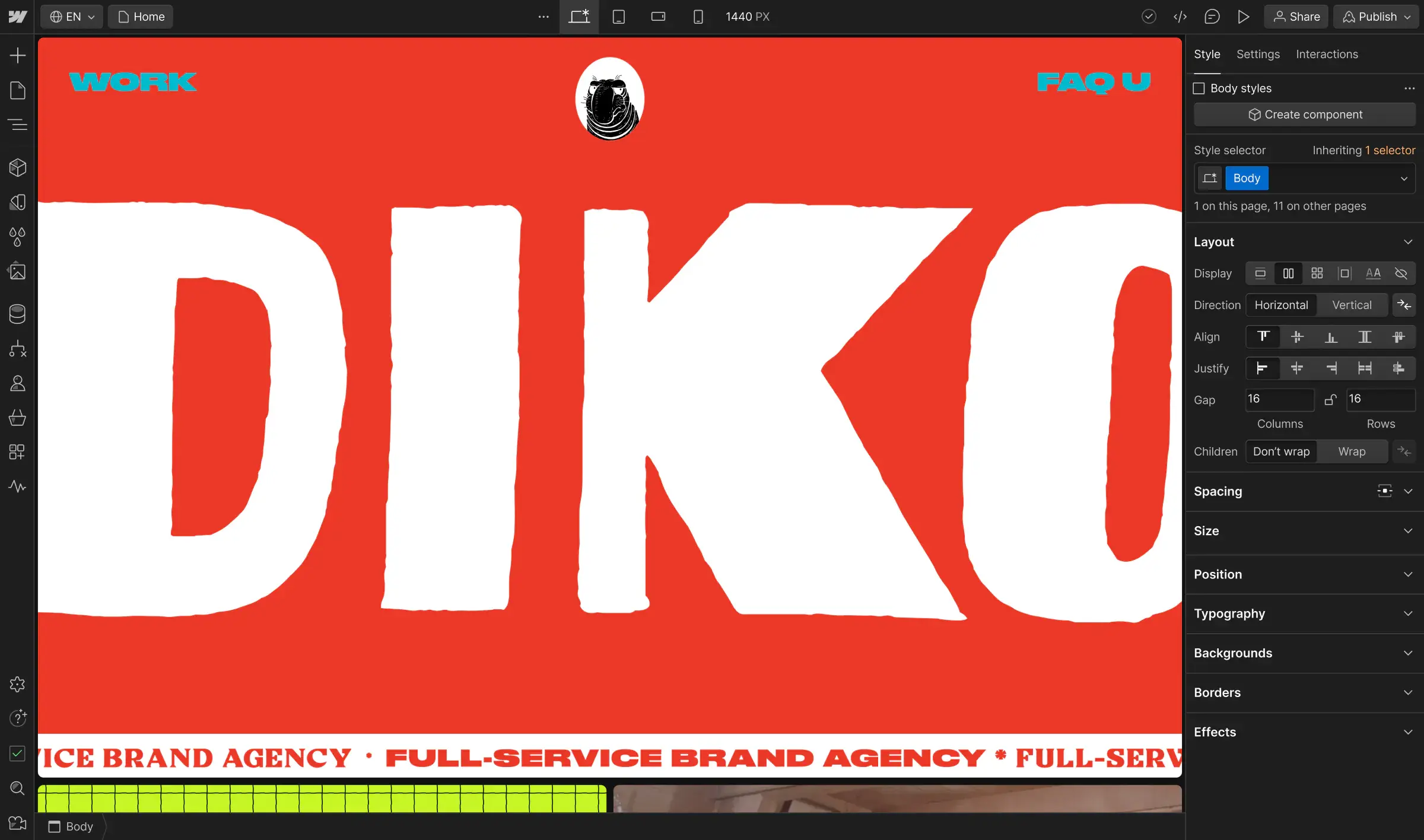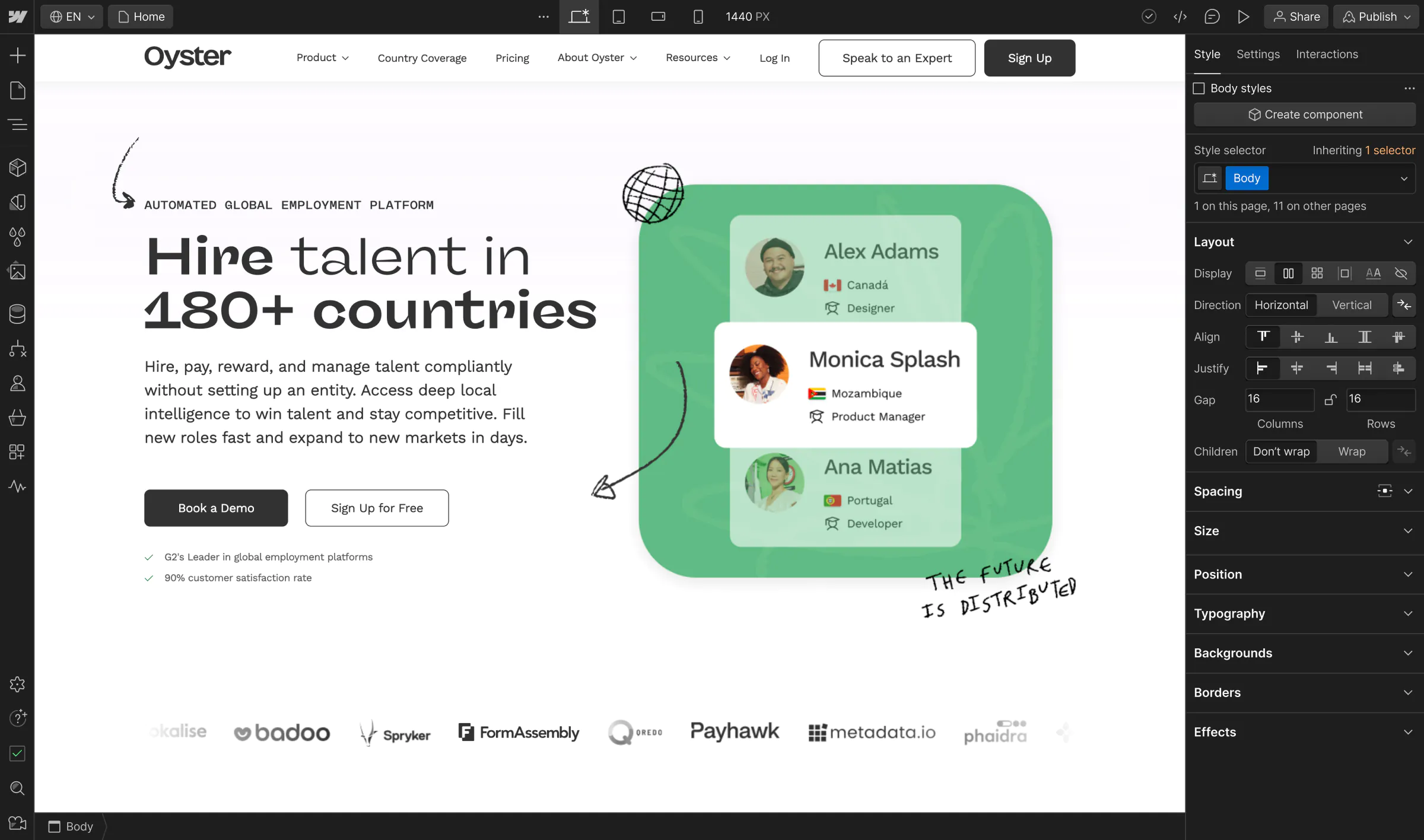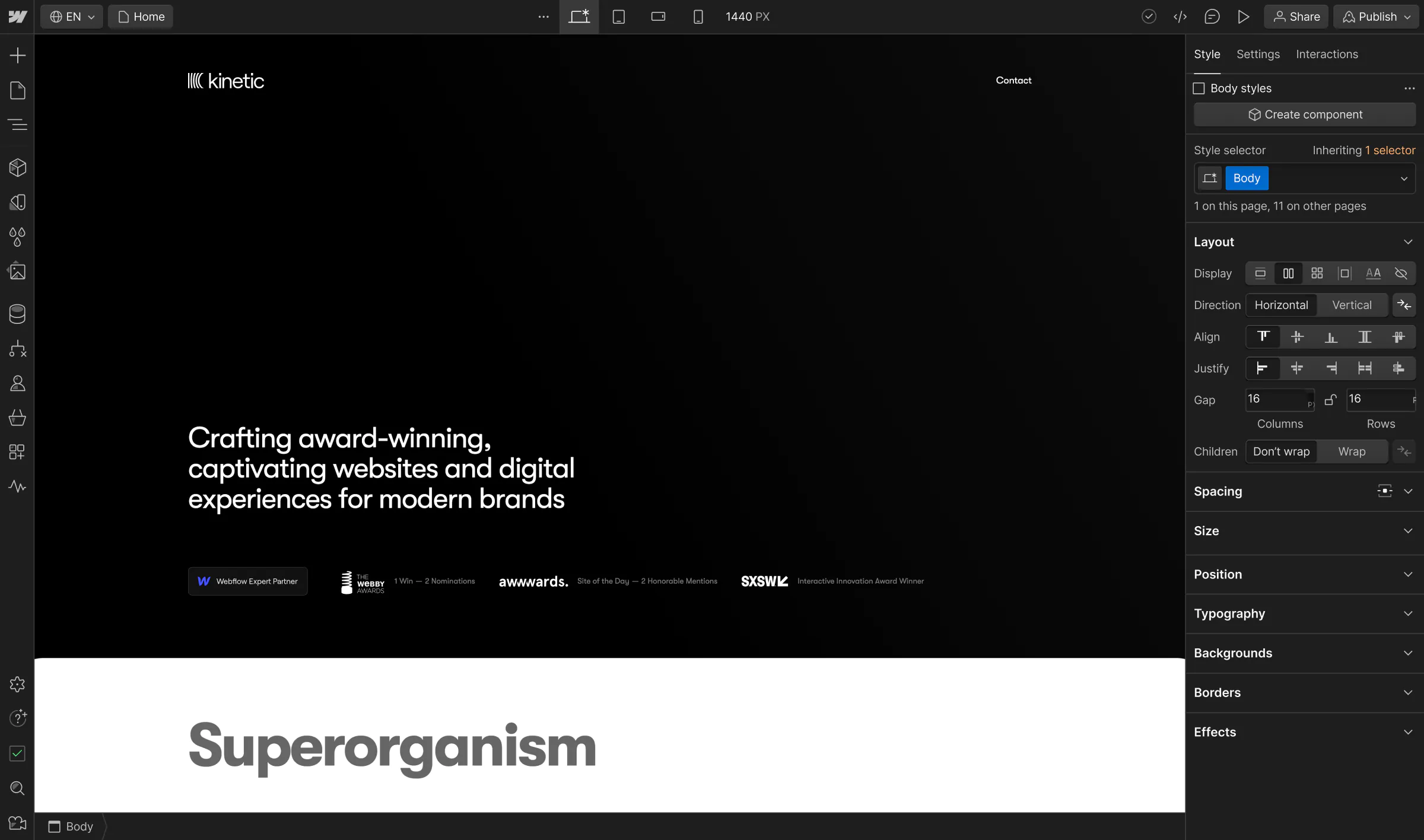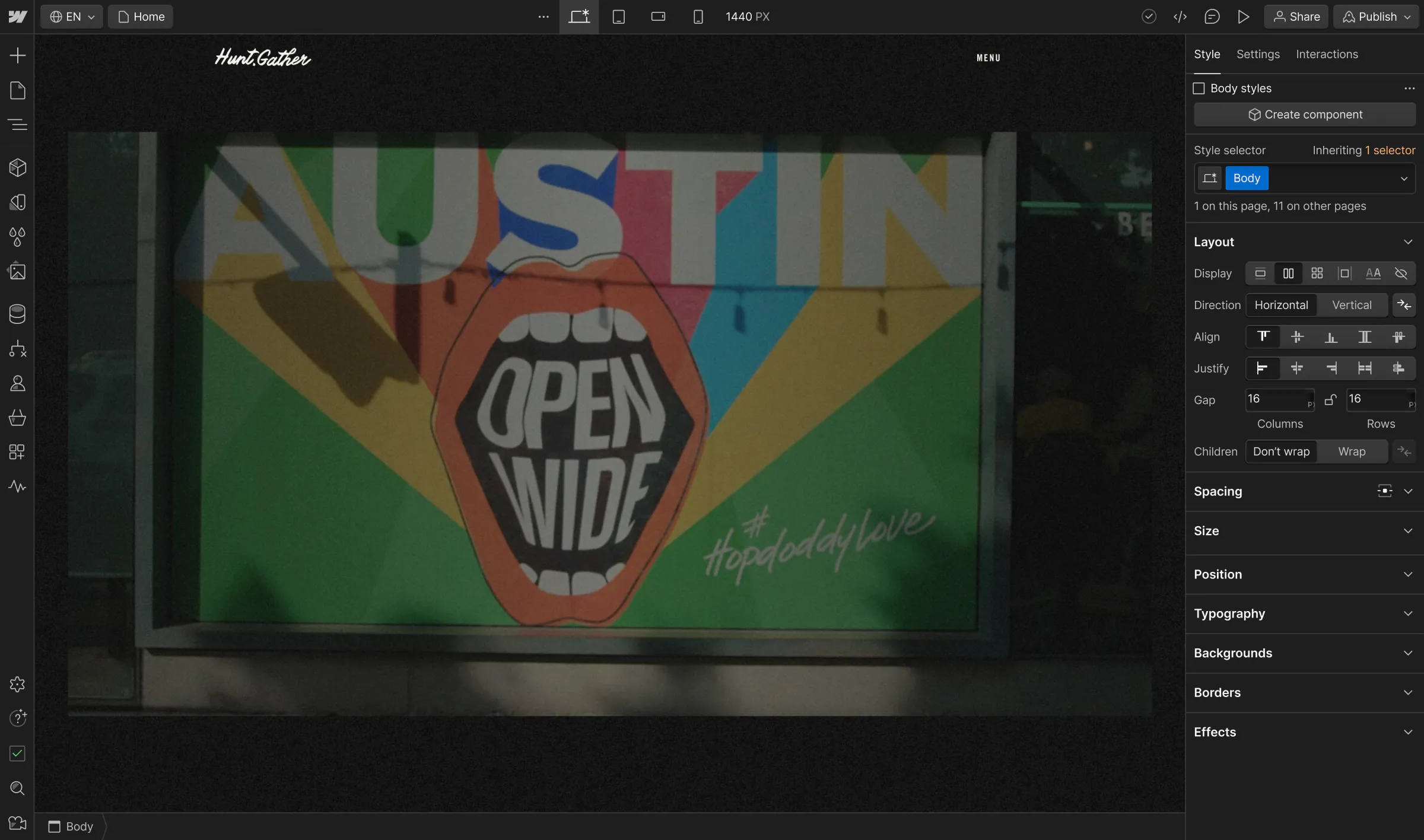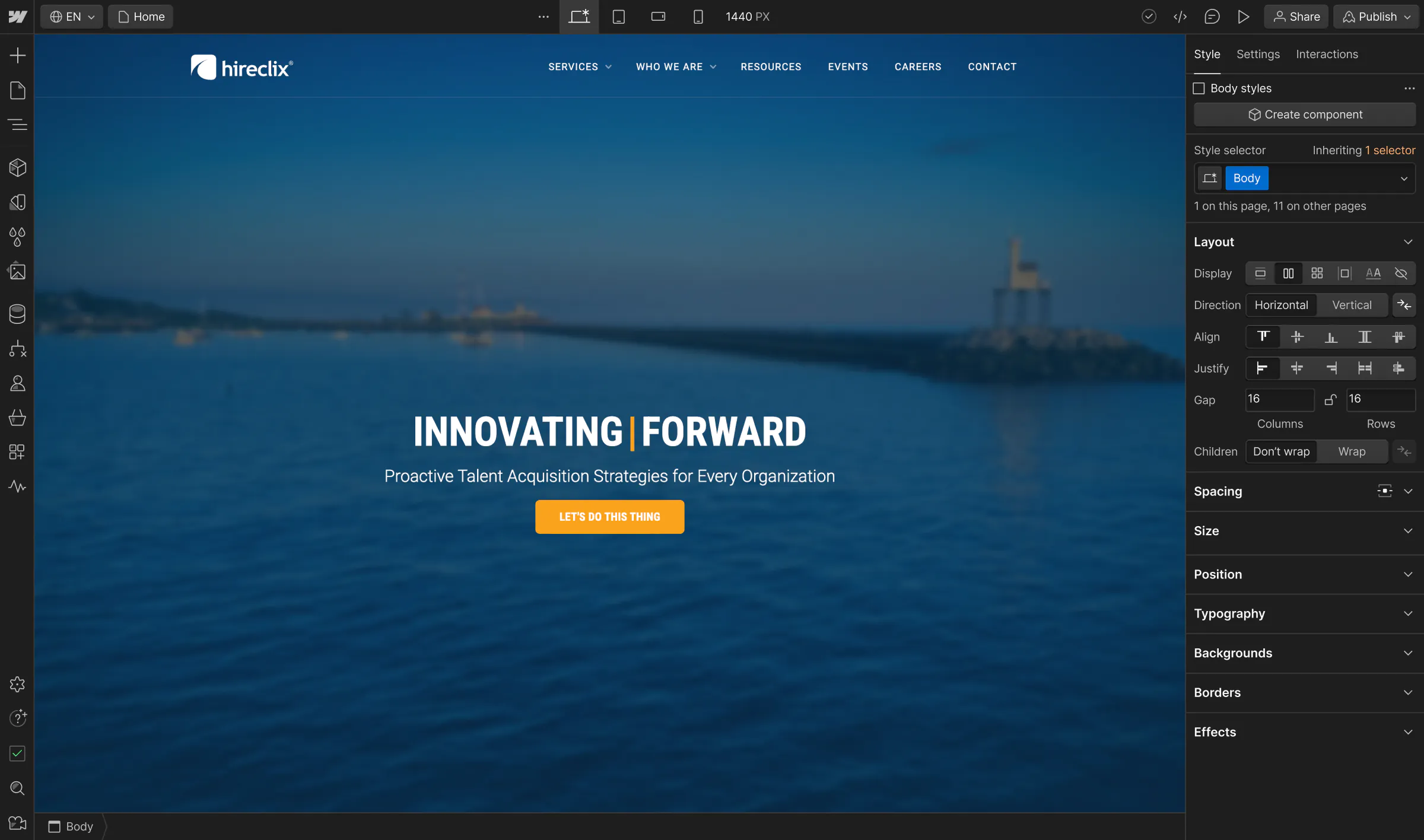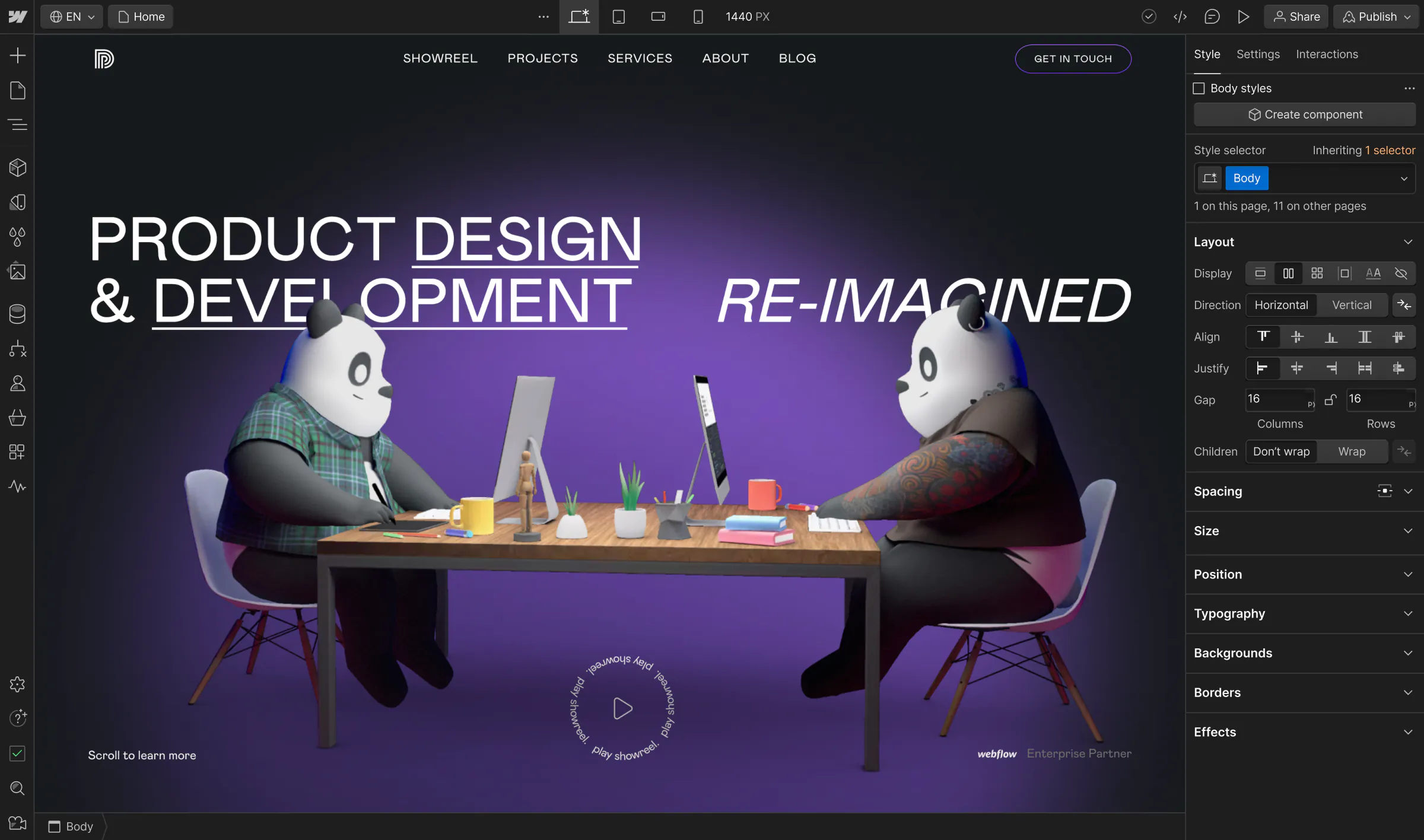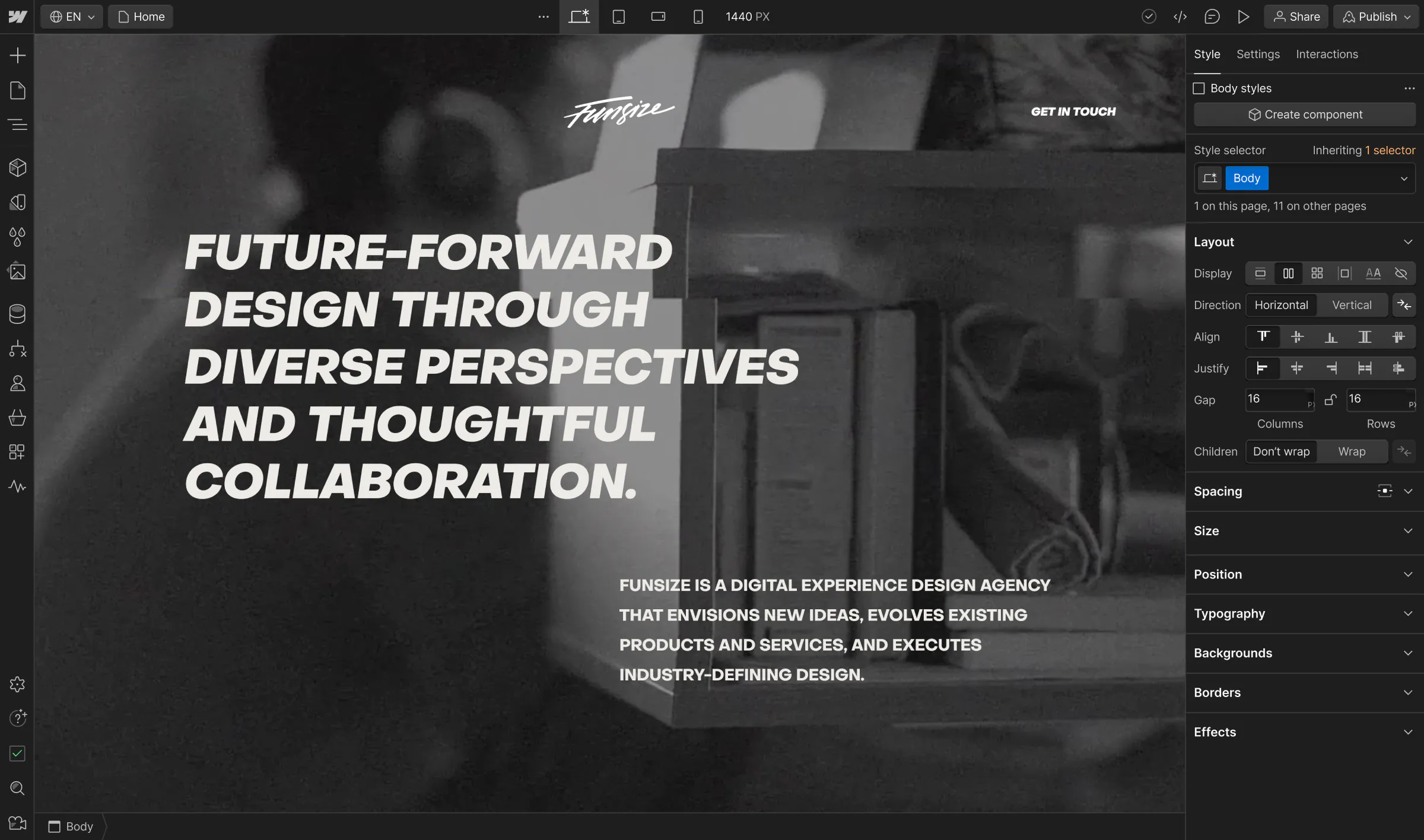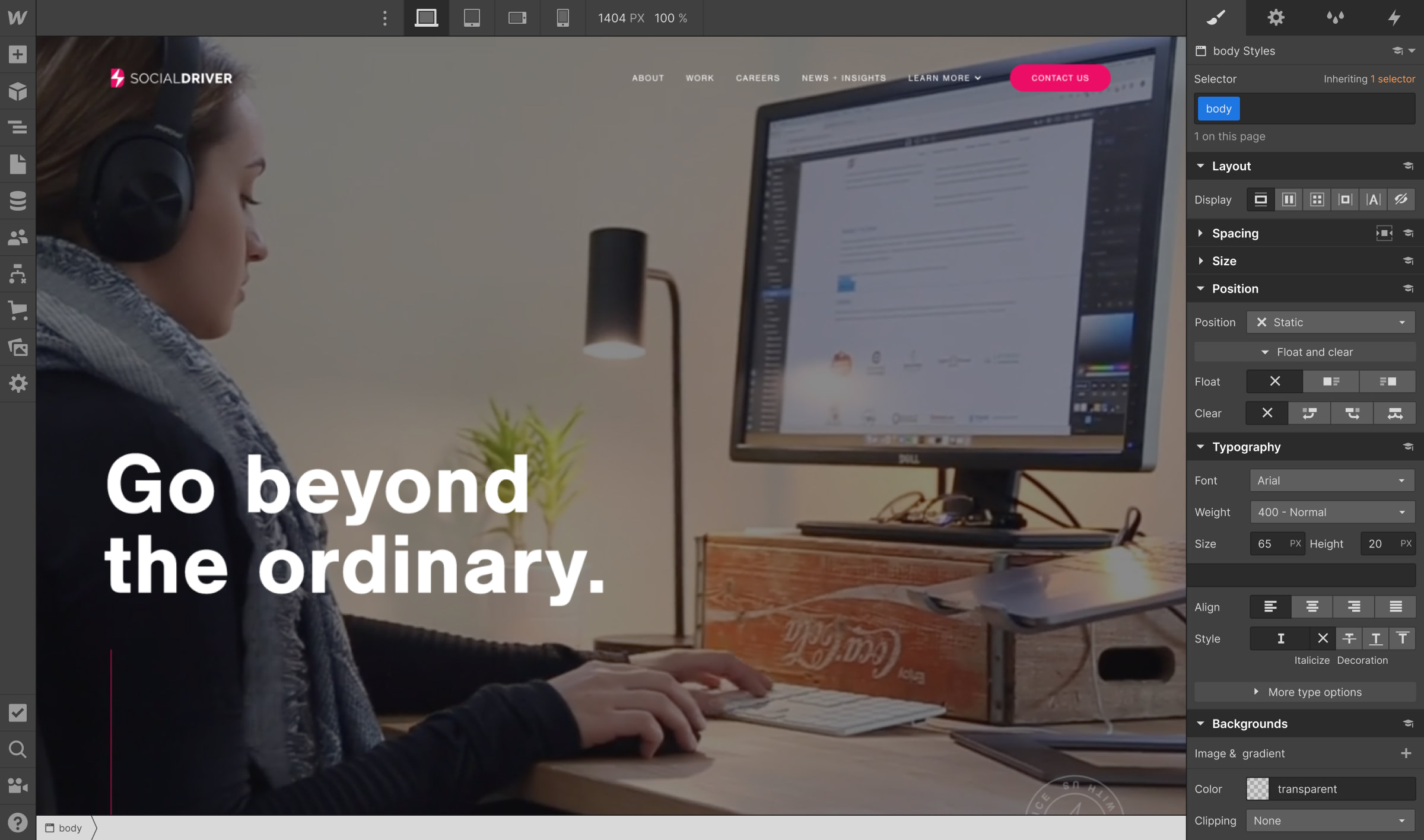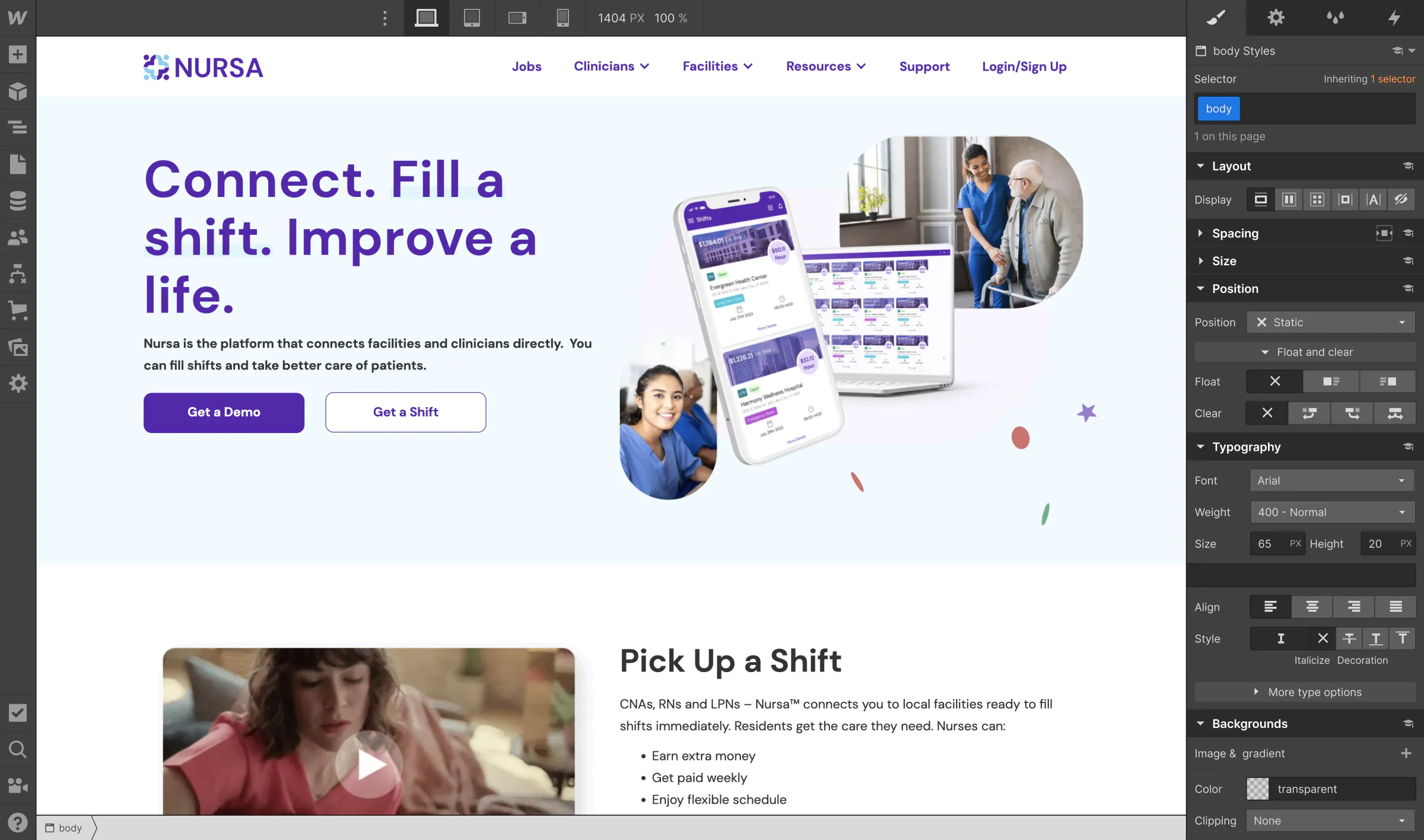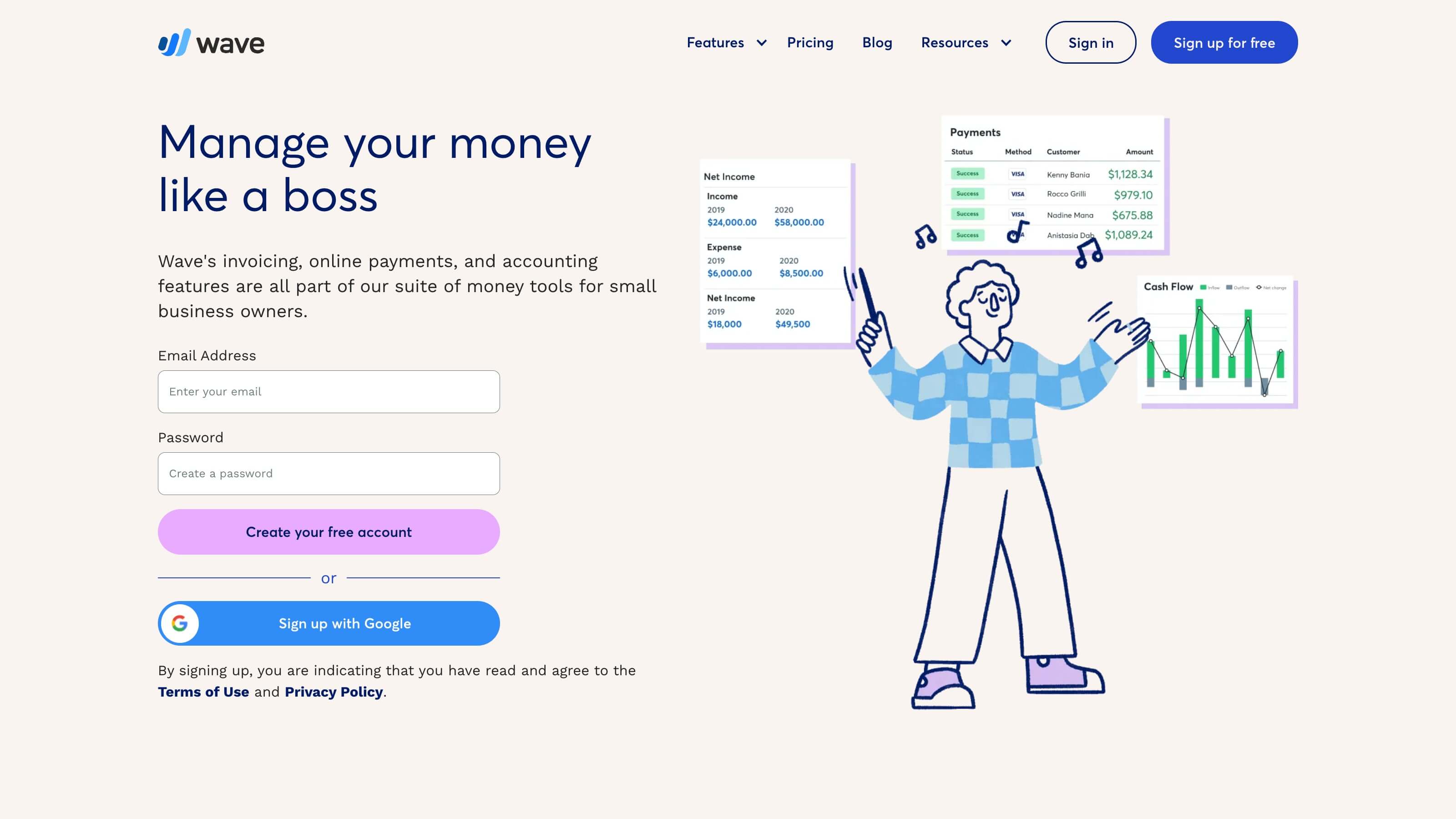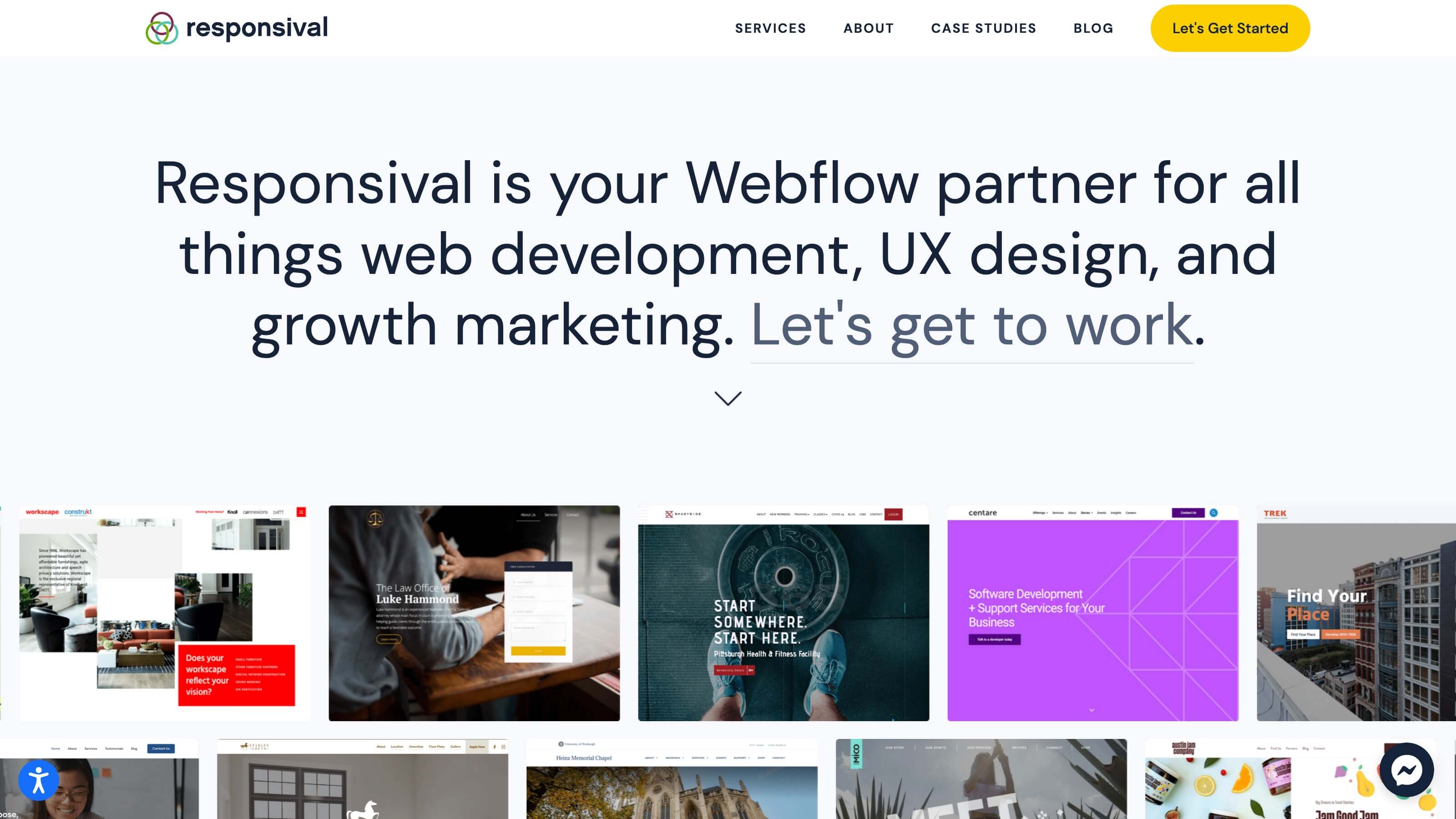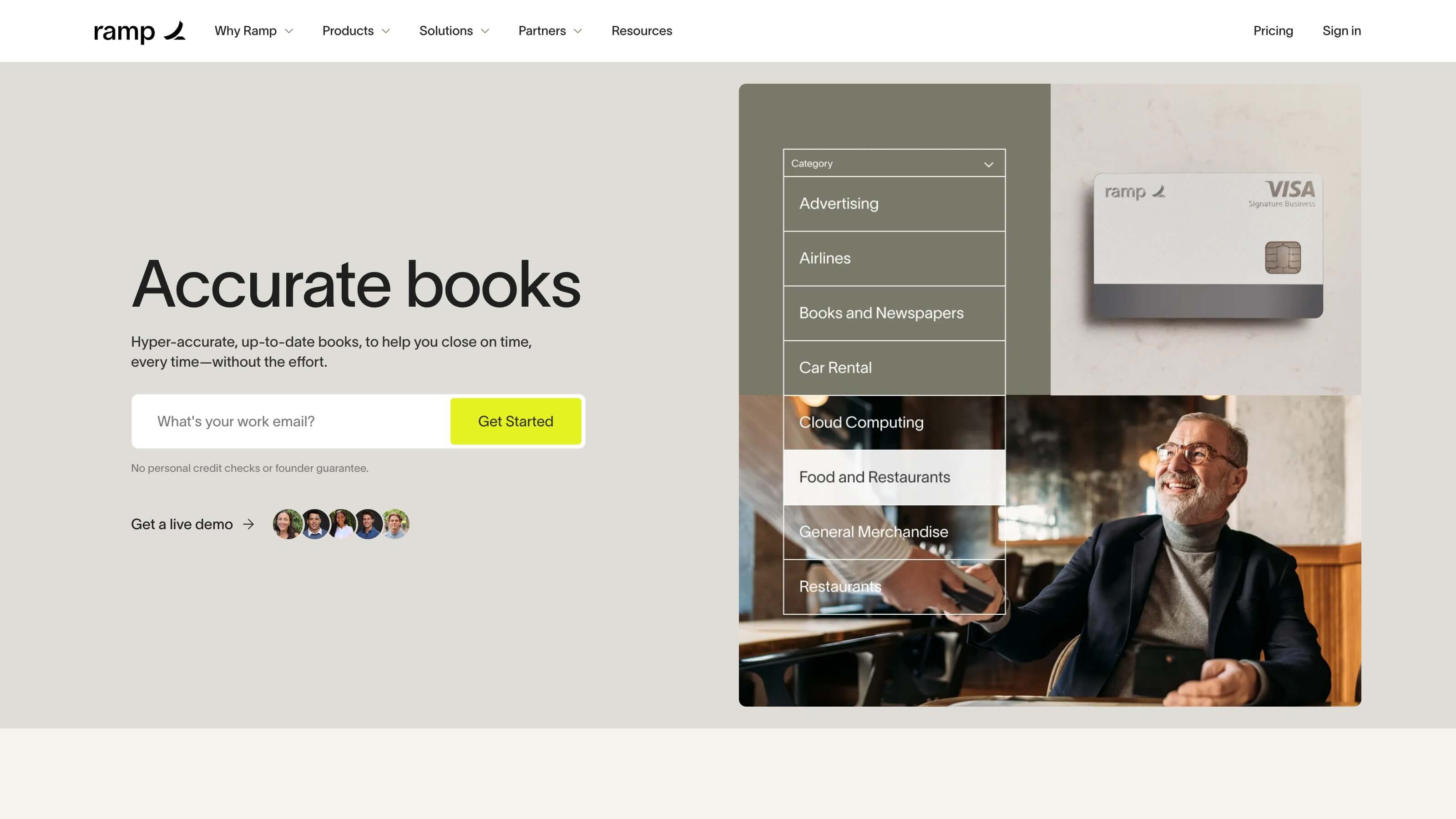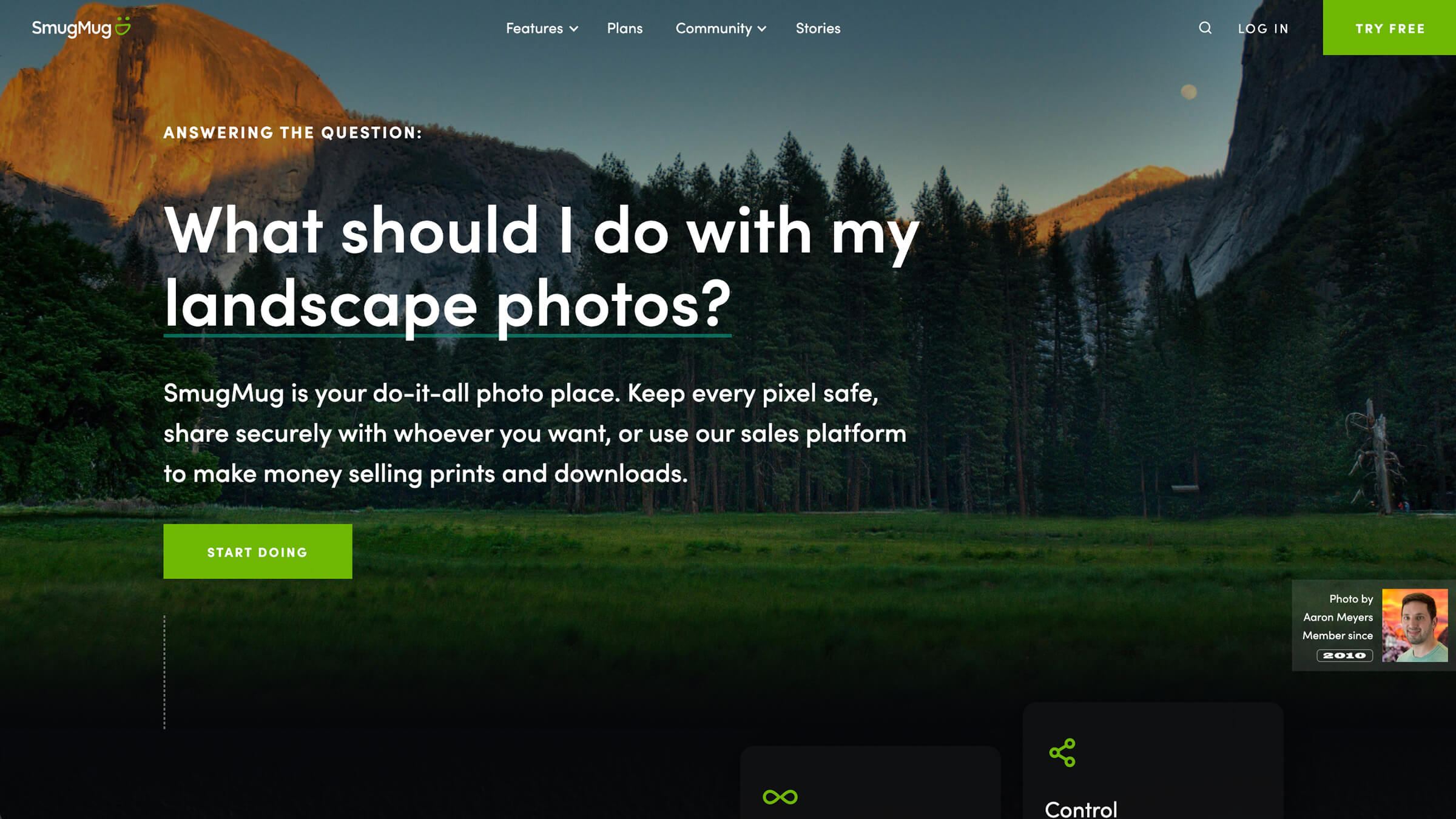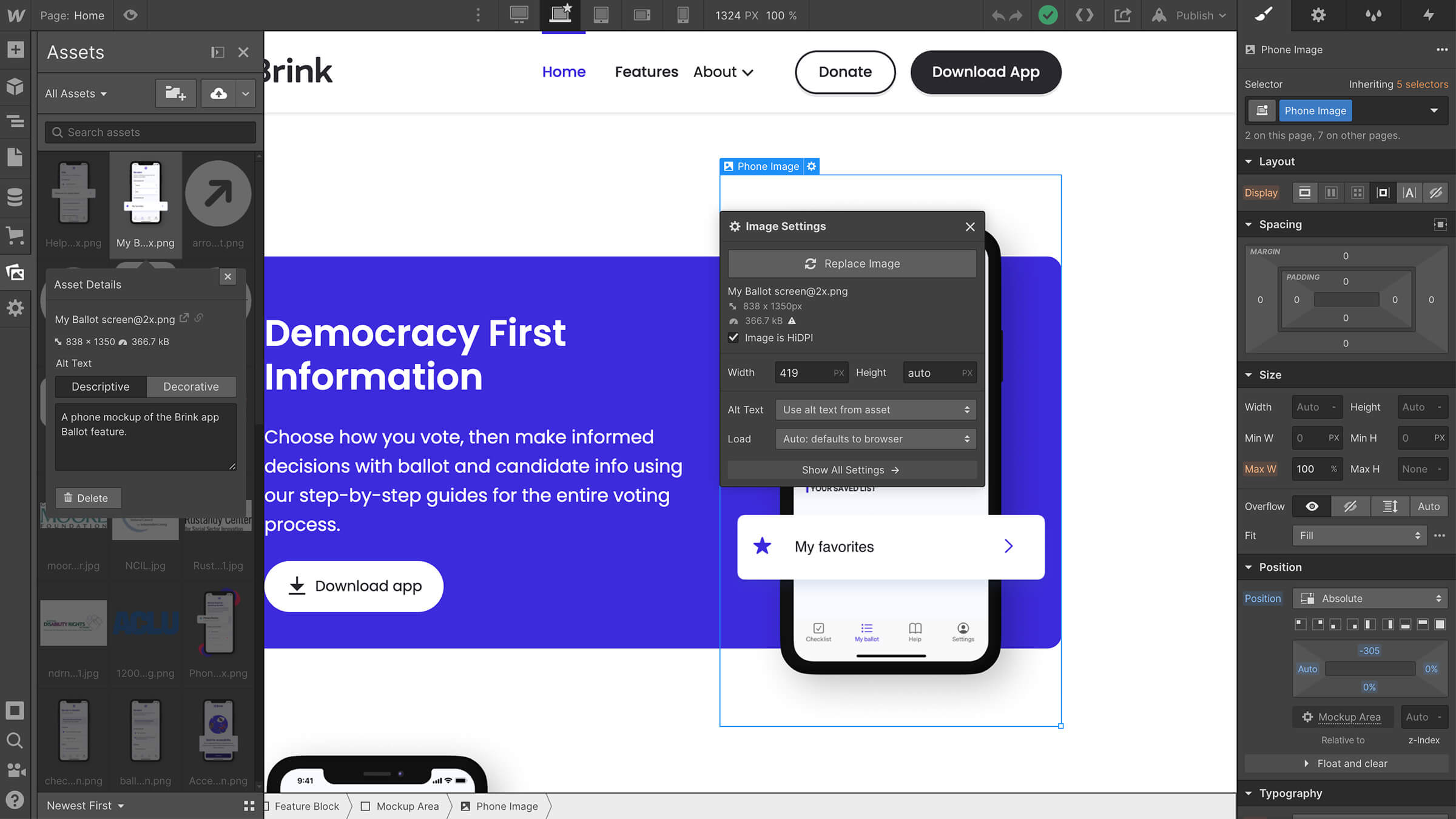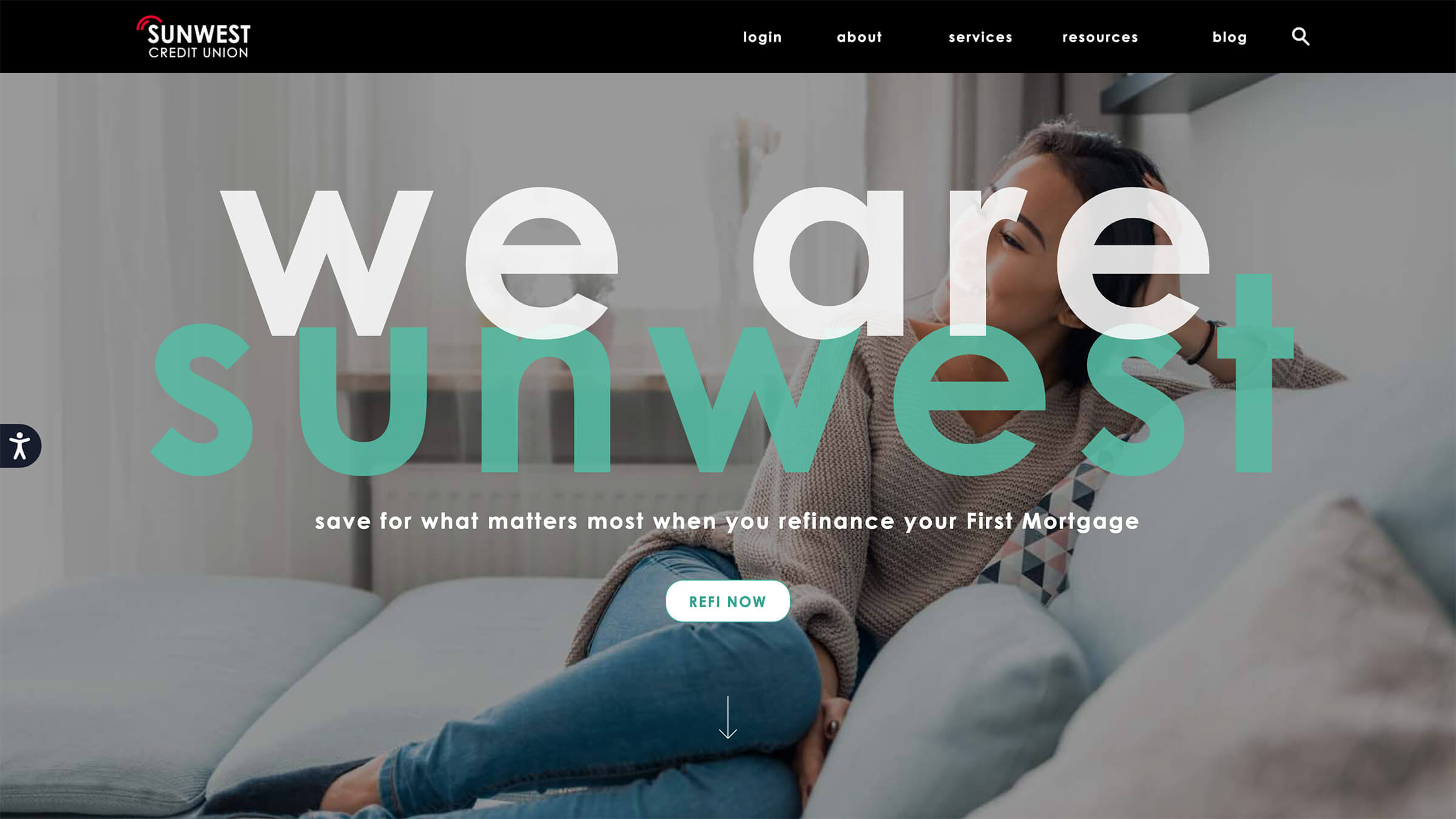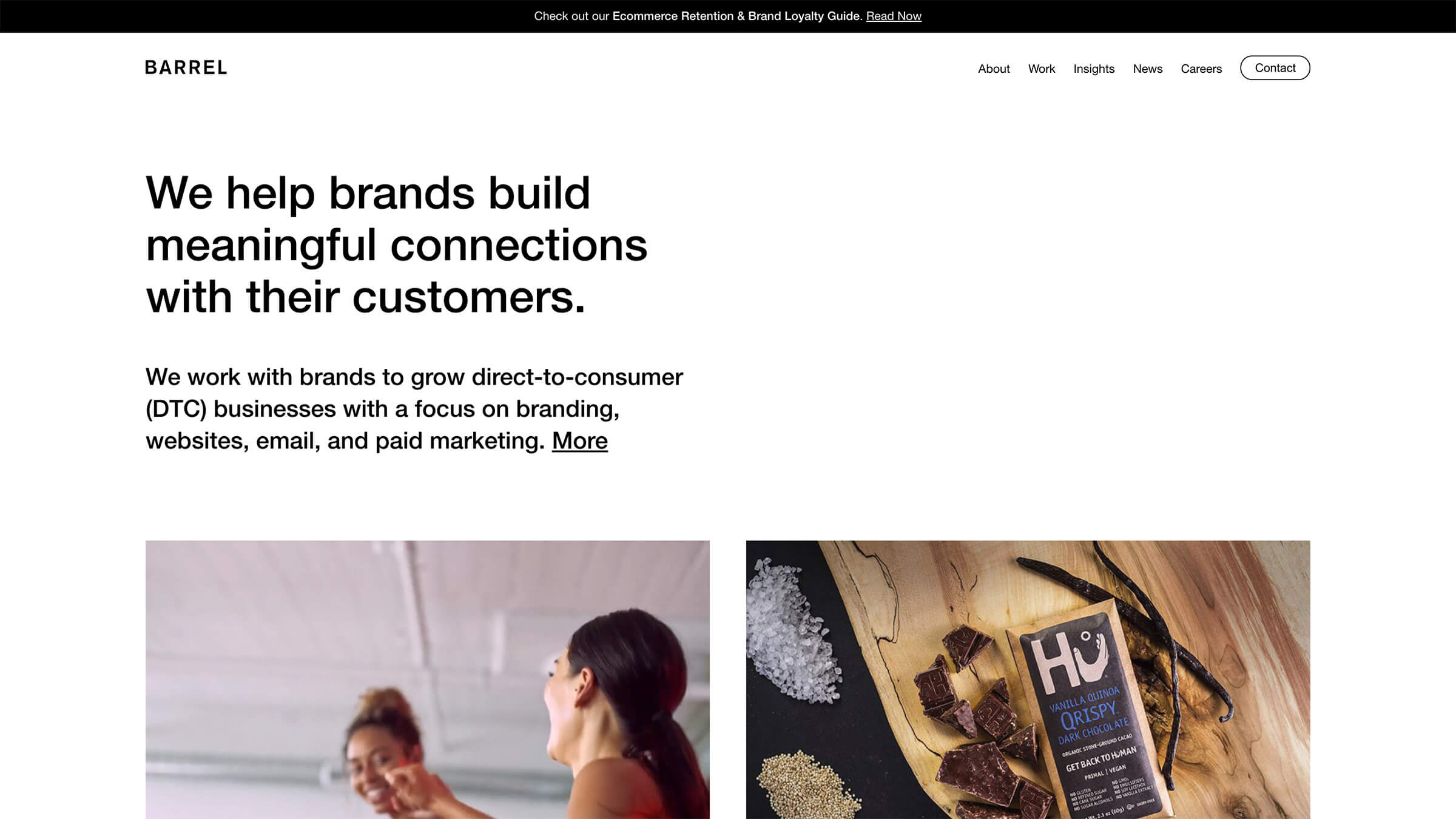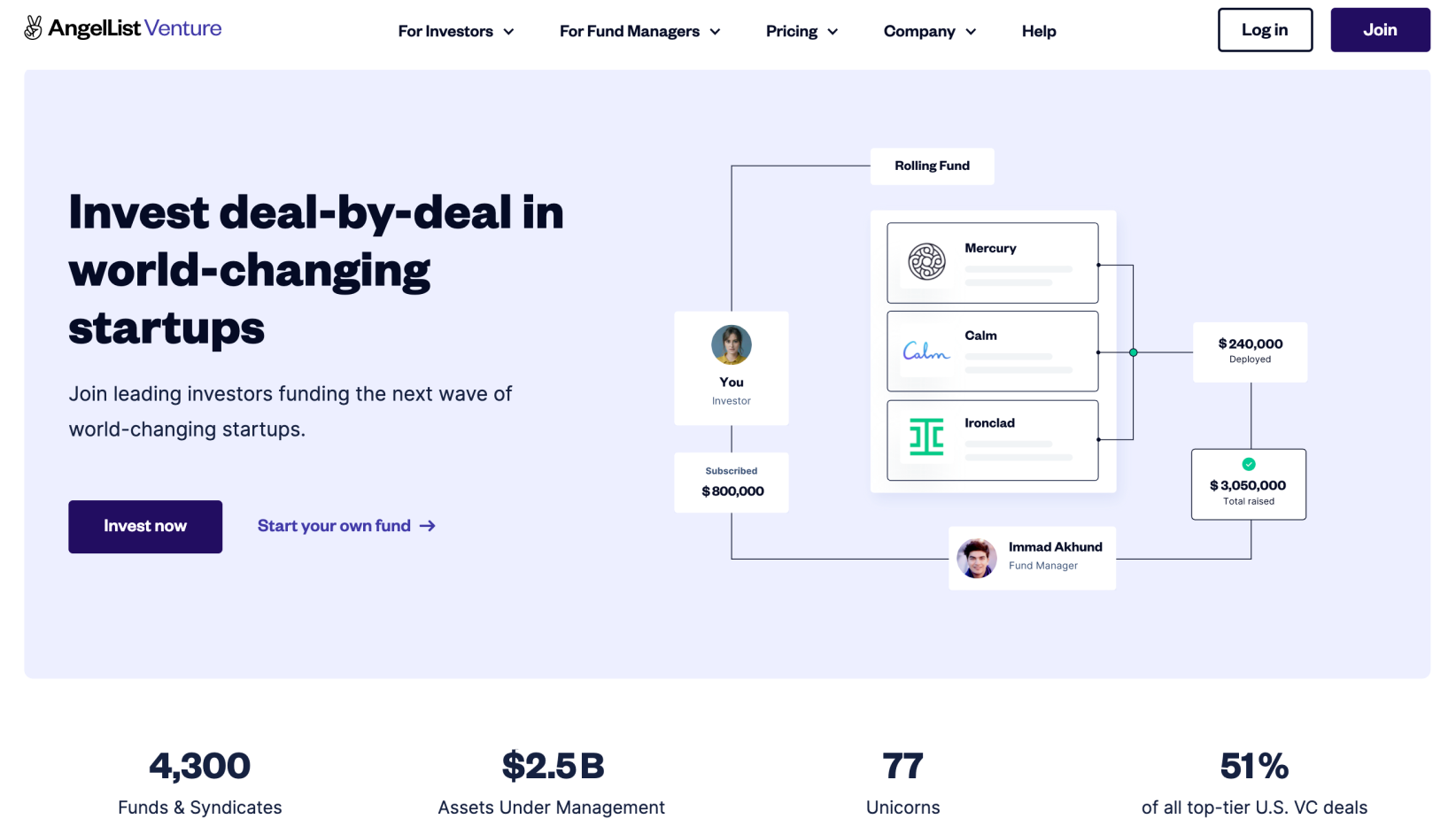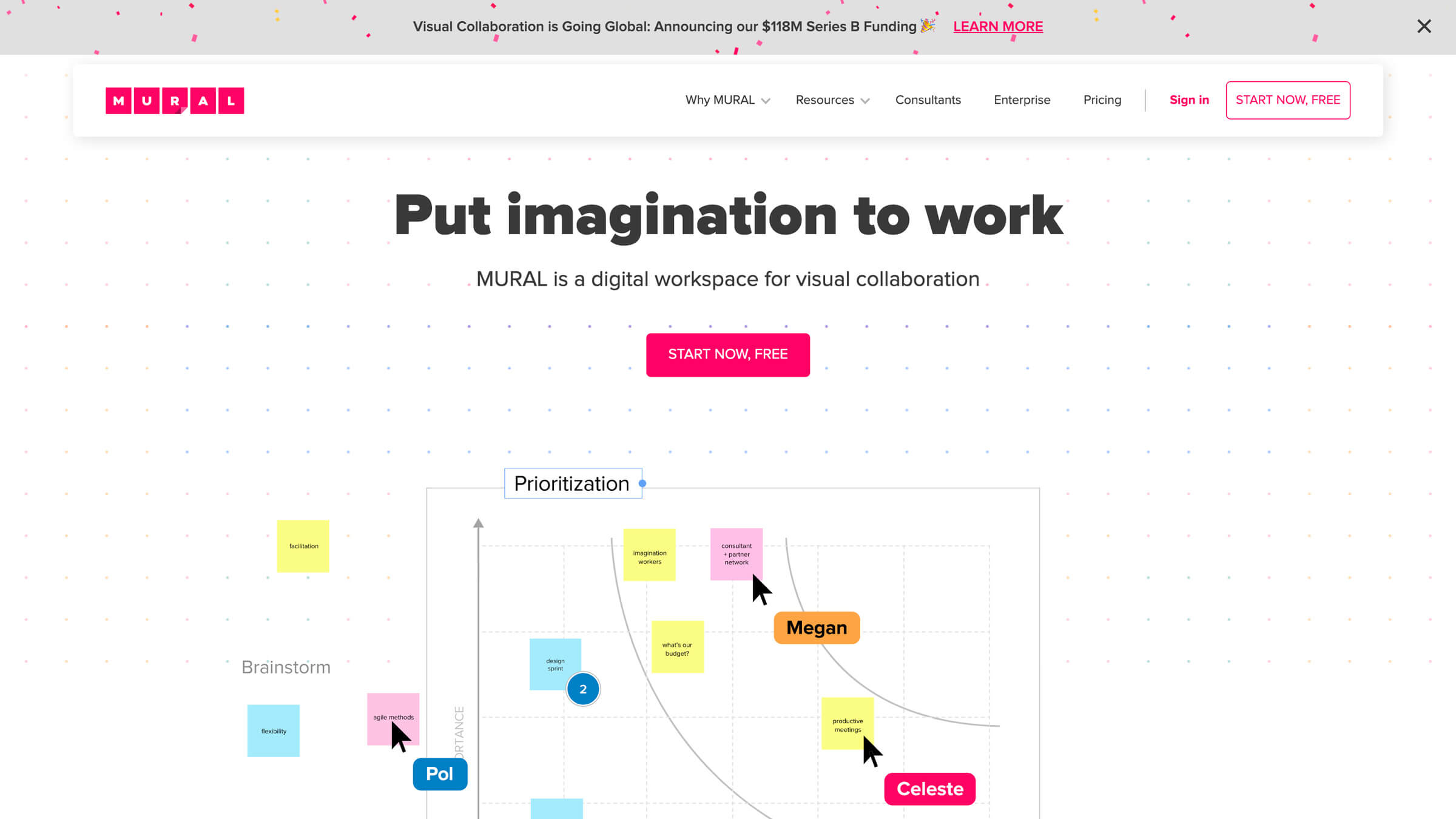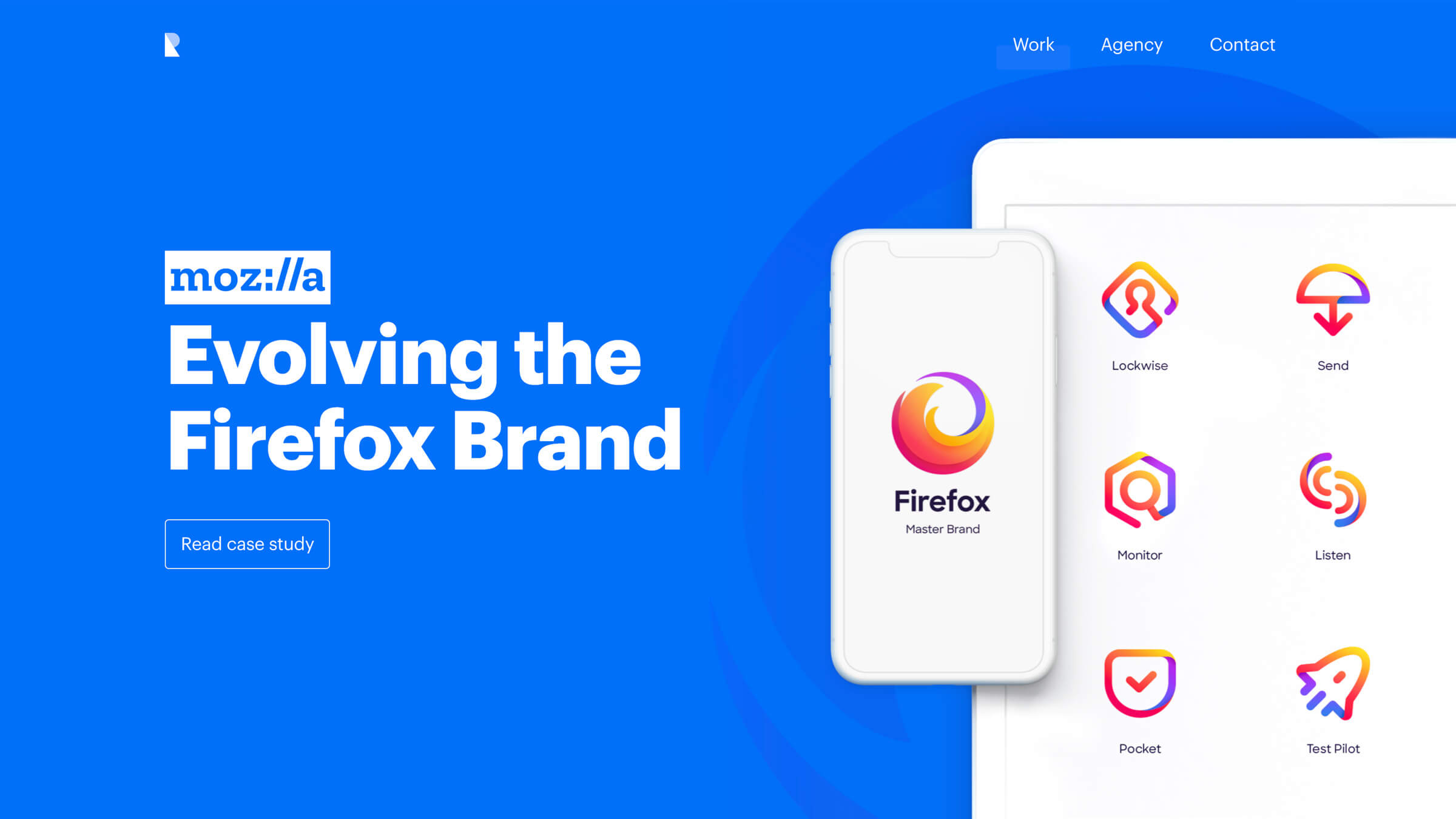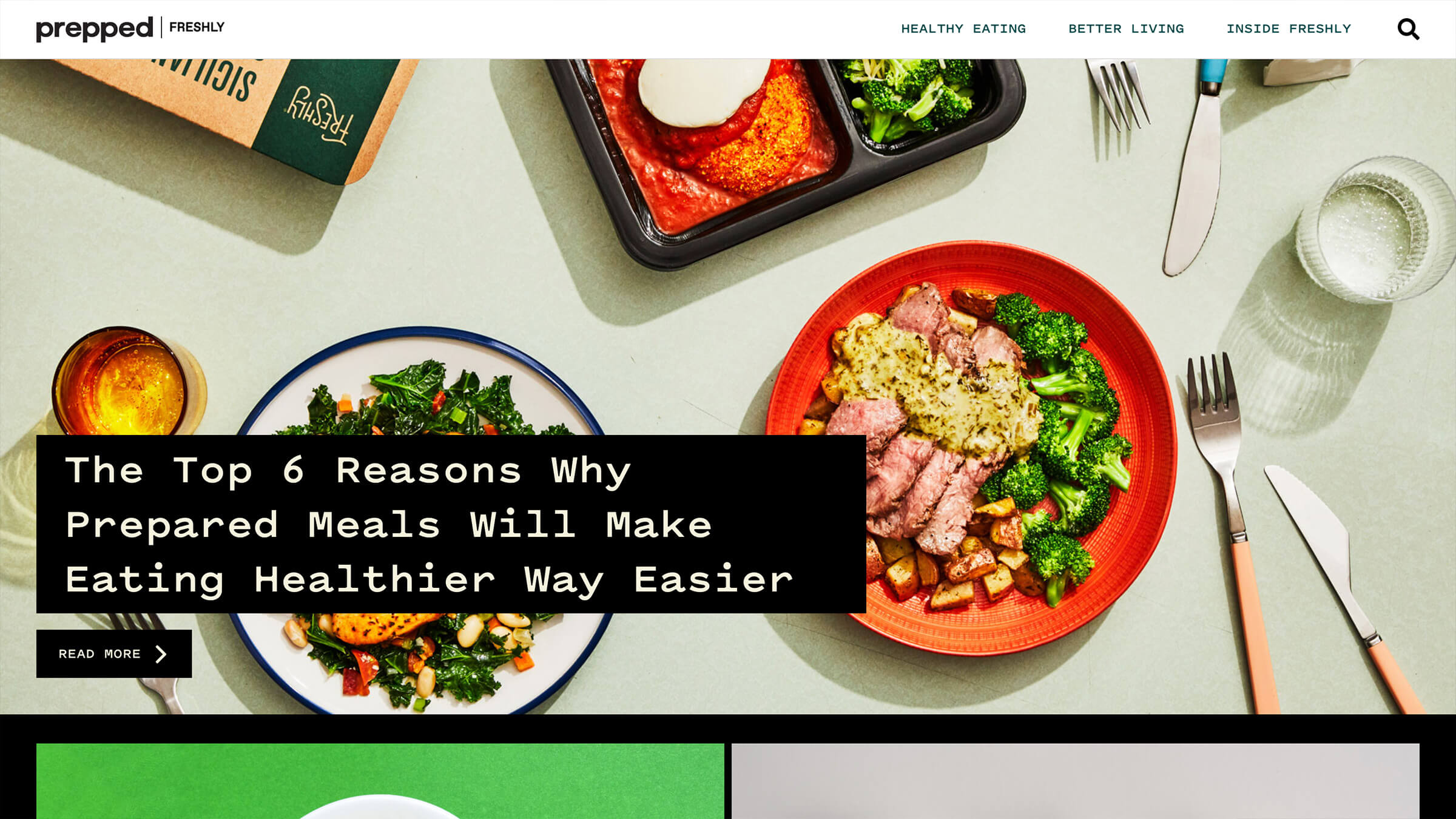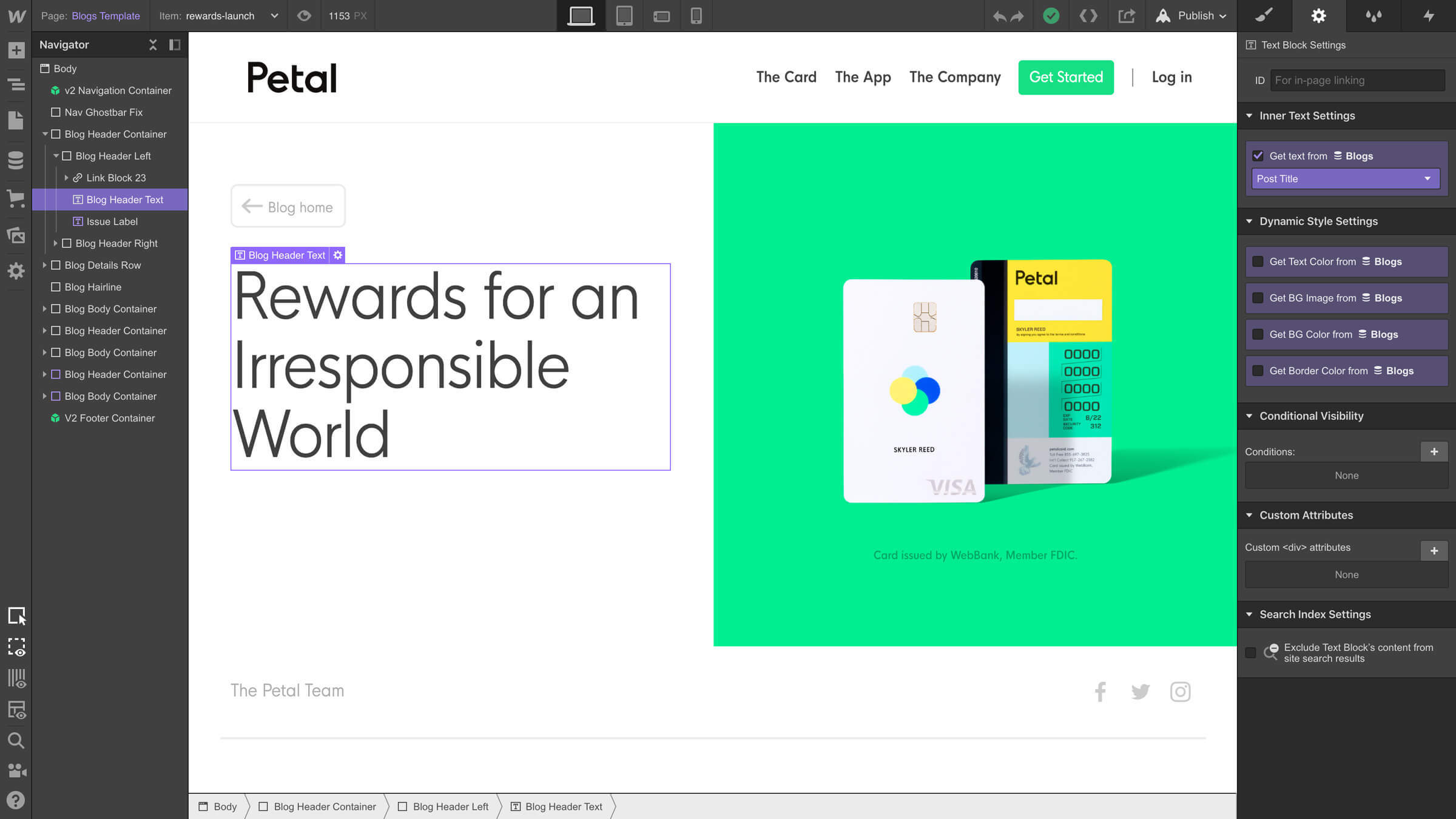How Kajabi helps customers earn billions through a more powerful web experience with Webflow
Quickly growing past the limits of Webflow self-serve for their global web presence, Kajabi upgraded to Enterprise to empower internal partners to build more robust web experiences, while ensuring governance.
Unlock your site’s full potential with best practices vetted by our experts. Learn the Webflow Way.
“We needed to work a lot faster and enable more colleagues to collaborate on the website. Webflow Enterprise gave us the robust security, advanced roles and permissions, and overall flexibility we needed to scale without compromise.”

All it takes is an idea to start a business. But then what? Many recognize that bringing that idea online is essential, but it’s difficult to know where to start. Kajabi has removed this blocker and enabled entrepreneurs to monetize and live off their hobbies and passions by creating their own online courses, coaching classes, podcasts, and more. Since launching in 2010, the all-in-one-platform has helped 50,000 creatives in 120 countries make over $6 billion in sales.
Kajabi’s first website was custom-built by the engineering team, which meant every change required their expertise and precious time. “Engineering leadership recognized they couldn’t continue working at marketing’s pace with their current system, and Webflow became the solution,” says Web Lead Tristan Tardy. As they continued to grow, Webflow’s self-serve offering relieved some of these dependencies, but teams were still reliant on engineering. Additionally, production bottlenecks meant these teams couldn’t collaborate effectively to build the web experiences necessary to accomplish their goals.
Tristan notes the huge opportunity a revamped website could provide: As the “front door” of the business, it needed to better market their offerings, get more people to try out their product, and increase brand recognition. “Although Webflow self-serve was a step up from our previous set-up, we were still limited to the functionality we needed to scale,” Tristan says. “We don’t want a tiny front door for a massive store. We need a bigger window and more real estate.”
Scaling without compromise with Webflow Enterprise
One of the biggest wins with Webflow Enterprise is the dedicated account support. They have been integral in setting us up for success. It’s an underrated benefit that makes us wish we upgraded sooner.
Teams jumped at the opportunity to get up and running with Webflow, and build and maintain their own webpages freely. But as more people collaborated on the site, governance became increasingly important, and changes were difficult to track. The volume of changes they needed to publish each day made identifying issues or bugs a tedious, time-wasting task.
To uplevel the Kajabi brand and empower their global team as they scaled, they needed a future-proof solution. “We really leaned into the support and flexibility that Webflow Enterprise could provide in order to grow,” says Engineering Manager Tom Kiefhaber. The breadth of support was critical in supporting different aspects of Kajabi’s web strategy. “If we have a technical question, we can get it answered directly. Our partnership has become so much more strategic, and we’ve elevated how we work across the company,” Tristan adds.
Today, anything that is or should be public-facing is on Webflow. “There were some preconceived notions of what ‘no-code’ or ‘design-focused’ platform would mean, but it was really quite simple: We are no longer limited by the platform,” Tristan says. “It solves most of our marketing challenges because we can do anything we put our mind to.”
And when there are site changes, Webflow’s Site Activity log gives the team full transparency and peace of mind. “Upgrading to Webflow Enterprise gives us more visibility into what changed and when, allowing us to find fixes faster,” says Tom. That granularity is important, as well as the ability to assign different roles to different teammates based on the jobs they need to get done, and ensure not just anyone can unknowingly release major updates.
No longer gatekeepers, engineering enables company-wide creativity
Webflow’s robust roles and modes of working give each teammate the specific controls they need, which means that our engineering team is no longer the gatekeeper to growing Kajabi’s web presence.
With Webflow Enterprise, the engineering team rebuilt the entire site architecture from the ground up using Finsweet’s client-first framework. Now, an intuitive design system follows a naming convention, is reusable, and can meet expanding business needs. “Instead of centralizing everything in one box, we can move horizontally, and now we have a truly purpose-built website,” Tristan says. Kajabi went from one person at the company being able to publish web content to 15 teammates across 3 departments.
With Webflow’s limited designer role, Kajabi can let team members less familiar with Webflow build pages safely with existing designs without risking unintentional changes that may impact the entire site. Additionally, cross-functional teams across Product Marketing, Legal, Content, Creative, and more leverage the edit role to make content changes as needed without having to rely on technical teammates. “Webflow has been paramount in enabling other teams to meet their goals. Everyone gets to flex their respective strengths and enable the business to grow,” says Tom.
To further protect Kajabi’s site from unintended changes going live, they leverage publishing workflows that give both a prepublish summary of all proposed changes and the ability to publish their site directly from staging to production. “With Webflow’s publishing workflows, our teams are in lockstep with what is in staging at any given time which helps control our content delivery and gives confidence that only approved changes will be published on our site,” explains Tristan.
Product marketing can independently update solution pages with new features. Content Marketing and PR can run the Kajabi newsroom on their own. Colleagues working on everything from paid ads to podcasts can manage their own content instead of relying on scant engineering resources. “Webflow empowers our teams to deliver better content faster.” Webpages that used to take a week to build, can now be built in ½ a day… that’s 90% faster speed to market for Kajabi’s global team.
Another particularly successful example is on the Kajabi affiliate team, which always wanted to build unique pages for top affiliates. Instead, they had to default to generic pages, or painstakingly build them one at a time. Now that Tristan’s team has Webflow templates, they’re able to run three back-to-back campaigns featuring more than 20 fully customized landing pages. “We’re saving months of work and allowing the affiliate team to optimize their business in a way that can scale,” Tristan says. With a more robust web strategy, Kajabi now sees over 50 net new trials per week, and has increased their conversion rate by 20%.
This unlocked agility allows Tristan and Tom to build out tests to increase conversion rates, speed up load times, and maximize SEO. “We can cater to the chaos of marketing without breaking our backs,” Tristan says. For example, previously, they’d have to drop everything to make updates on the product change log. Now that the Product team is empowered to maintain the page on their own, engineering saves roughly 16 hours a month. That's 2 days that they can refocus on more business critical work.
Empowering knowledge entrepreneurs to surpass their own expectations
Webflow has helped us transition to a true ecosystem that can grow with the business and all of our teams’ needs.
Some Kajabi creators are already very successful and just need to move into the digital space. Others are moving over from a competitor. Others are just starting out and leveraging Kajabi to finally put some momentum behind their dreams. “We want to find out what’s blocking them and then remove that barrier so that they can find success,” says Tristan. The circle of enablement is a win-win. Engineering uses Webflow to enable other parts of the business to optimize their work—which, in turn, enables Kajabi’s creators to thrive.
With Webflow Enterprise neatly folded into their business and a dedicated account team to support them as they evolve, teams across Kajabi can easily collaborate and flex their ability to experiment and optimize pages. In short, their initiative to pivot how they build professional web experiences has transformed the company. “We weren’t able to turn an idea into something concrete, and stifled our own growth,” Tristan says. “If we didn’t upgrade, we would have stayed right where we were, which no longer fit the business.”
Explore more Enterprise stories
Explore more stories
Get started for free
Try Webflow for as long as you like with our free Starter plan. Purchase a paid Site plan to publish, host, and unlock additional features.
Try Webflow for as long as you like with our free Starter plan. Purchase a paid Site plan to publish, host, and unlock additional features.


